 Noida: 6th Floor, Iconic Corenthum, Sector 62, Near Gate No 3 Electronic City Metro Noida, 201301 UP(India)
Noida: 6th Floor, Iconic Corenthum, Sector 62, Near Gate No 3 Electronic City Metro Noida, 201301 UP(India) Delhi: G-20, 2nd Floor, Preet Vihar, Near Preet Vihar Metro Station Gate No 4, Delhi-110092
Delhi: G-20, 2nd Floor, Preet Vihar, Near Preet Vihar Metro Station Gate No 4, Delhi-110092 info@gicseh.com
info@gicseh.com
 4.9 out of 5 based on 4000 Students Rating
4.9 out of 5 based on 4000 Students Rating
The media has popularized the term "cyber security" to refer to the process of safeguarding against all sorts of cybercrime, from identity theft to global digital firearms.
These descriptions are accurate, but they do not represent the entire nature of cyber security for persons lacking a computer science degree or expertise in the digital economy.
Cybersecurity is the safeguarding of devices and services that are connected to the internet from unauthorized attacks by hackers, spammers, and cybercriminals. Companies utilize this strategy to protect themselves against scams, attacks involving ransomware, identity theft, data breaches, and financial losses.
Nowadays, you'll notice that technology has become more important than ever before. The advantages of this development range from near-instant access to information on the Internet to modern conveniences afforded by smart home automation technologies and concepts such as the Internet of Things.
Despite plenty of good generated by technology, it's difficult to comprehend that potential hazards exist behind every device and platform. However, despite society's optimistic impression of modern developments, cyber security concerns posed by modern technology are a real threat.
1. Network Security
Network security
aims to safeguard your computer network from unwanted access, breaches of data, and other network-based dangers. Firewalls, systems for detecting and preventing intrusions (IDS/IPS), and virtual private networks are among the most used network security solutions.
2. Application Security
Application security focuses on protecting software programs from vulnerabilities that attackers may exploit. Code reviews, testing for penetration, and vulnerability scanners are among the most used application security measures.
3. Information Security
Information security
protects sensitive information against unauthorized access, disclosure, change, or destruction. Data safeguarding, access control, encryption, and data loss prevention (DLP) are some of the most popular information security strategies.
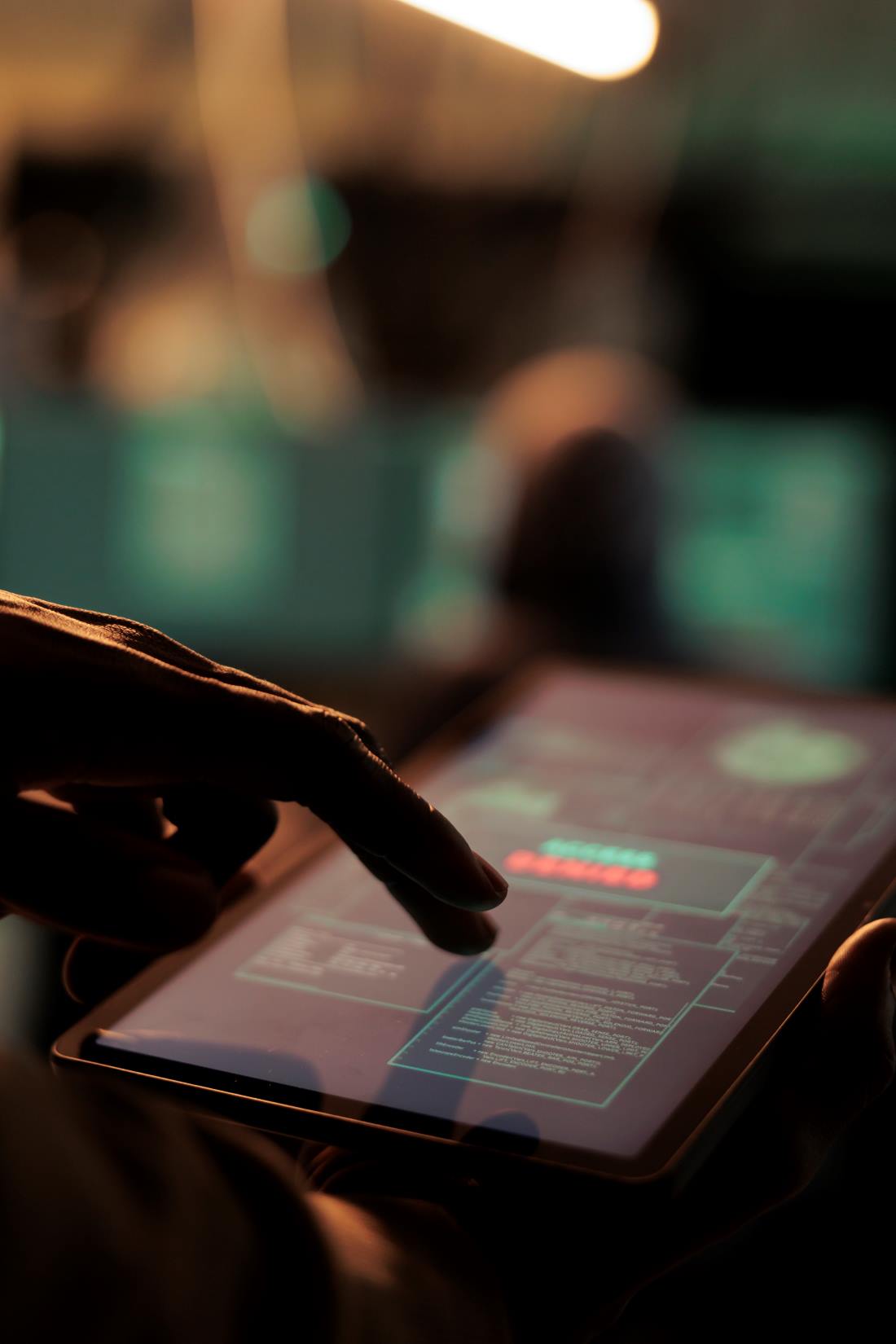
4. Cloud security
Cloud security protects cloud-based assets and services like applications, data, and infrastructure. IAM, data encryption, and SIEM are all examples of common cloud security techniques.
5. Endpoint security
Endpoint security protects individual devices like laptops, desktops, and mobile phones from malware, phishing assaults, and other threats. Antivirus and anti-malware software, as well as firewalls, are common endpoint security methods.
6. Operational security
Operational security refers to the rules and procedures that businesses use to shield their data and systems. Safety awareness training, incident response planning, and catastrophe recovery planning are among the most common operational security procedures.
7. Network Security
The administrator of your online domain protects your network from unauthorized access. Imagine it as a strong palace wall for your data.
Firewalls: These serve as diligent guardians, keeping an eye on both inbound and outbound data while allowing only authorized access.
8. Intrusion Detection and Prevention Systems (IDS/IPS)
These function as vigilant scouts, constantly checking your network for suspicious behavior and proactively blocking possible threats.
9. Virtual Private Networks (VPNs)
These are safe tunnels that your data can pass through, even on public networks, assuring privacy and encryption.
10. Application Security
Application security is the shield that protects your software from flaws that attackers can exploit. Consider it as the knight's shield for your applications.
11. Vulnerability Scanners
Automated technologies that continuously analyze your apps for known flaws, providing early warning of potential security threats.
12. Information Security
The safekeeping place for your sensitive information, protecting its confidentiality, integrity, and availability. Consider it a secure safe for your vital information.
Data Encryption:Converting your data into scrambled code that is eligible to anybody without a key to decode it, even if intercepted.
13. Access Control
Giving people particular permissions depending on their responsibilities and needs to prevent unwanted access to sensitive data.
14. Data Loss Prevention
Data Loss Prevention (DLP) refers to the monitoring and restriction of sensitive
data transfers to avoid unauthorized releases or breaches.
India's digital ecosystem is undergoing an enormous transition, with rising internet adoption, an e-commerce boom, and a thriving tech sector. However, this digital transformation brings with it a growing threat: cybercrime.
1. Rising Cyber Threats:
As India moves toward digitization, cybercriminals see a profitable target. Data breaches, virus assaults, and financial fraud are becoming increasingly common among businesses, government institutions, and people.
2. Data Protection Concerns:
The upcoming Data Protection Bill in India, as well as existing legislation like GDPR (General Data Protection Regulation), require for strong cybersecurity measures to protect user privacy and sensitive data.
3. Financial Implications of Cybercrime:
Cyberattacks can devastate enterprises, resulting in financial losses, damage to reputation, and interrupted operations. The necessity to protect key infrastructure and reduce risks drives the demand for cybersecurity knowledge.
4. Evolving Threat Landscape:
As cyberattacks become more complex, qualified workers must stay ahead of the curve. Ethical hackers (white hat hackers) who can detect flaws and test defenses are critical for proactive security.
1. Job Market Boom:
Job postings for cybersecurity professionals in India have increased significantly. Websites such as Indeed and LinkedIn highlight this growing trend.
2. Lucrative compensation:
The need for qualified workers drives higher compensation, making cybersecurity an appealing career choice for tech talent.
3. Government projects:
The Indian government acknowledges the importance of cybersecurity and is actively supporting projects such as "Skill India" to help develop a trained cybersecurity workforce.
The demand for cybersecurity specialists is expected to continue growing. As India's digital economy grows, protecting sensitive information, and essential infrastructure, and ensuring a secure online environment will become increasingly important.
India's digital ecosystem is undergoing a tremendous transition, spurred by causes including as
Increased internet penetration
E-commerce growth.
Growing IT industry
However, this digital transformation has a disadvantage: it makes people more vulnerable to cybercriminals. Here's a look at the future of cybersecurity in India, including both challenges and opportunities:
The demand for cybersecurity expertise is surpassing the available talent. To bridge this gap, rigorous training programs and efforts such as "Skill India" are required to develop a trained workforce.
1. Evolving Threats:
Cyberattacks are becoming more complex, necessitating ongoing monitoring and adaptation. India need people capable of detecting and resisting zero-day threats, ransomware, and social engineering strategies.
2. Data Protection Concerns:
With the impending Data Protection Bill and existing rules such as GDPR, firms must have strong data security procedures. A qualified team is critical for ensuring compliance and user privacy.
3. Infrastructure Security:
As India's essential infrastructure gets more digitalized, safeguarding these systems becomes critical. Cybersecurity professionals are required to protect power grids, transportation networks, and other critical systems.
1. Job Growth:
The cybersecurity sector is predicted to create a considerable number of jobs, providing lucrative career prospects for experienced workers.
2. Focus on Innovation:
Indian entrepreneurs and enterprises can provide novel cybersecurity solutions for home and international markets. This might be a major driver of economic growth.
1. Invest in Education:
Establishing strong cybersecurity education programs at universities and colleges will result in a pipeline of competent experts.
2. Promote Awareness:
Public awareness initiatives can help citizens learn about cyber risks and best practices for internet safety.
3. Cybersecurity Frameworks:
By implementing industry-standard cybersecurity frameworks, firms may construct stronger defenses.
4. Collaboration:
Fostering collaboration among stakeholders in India and with international partners helps promote knowledge exchange and a unified front against cyber threats.
India can create a secure and resilient digital ecosystem by solving difficulties and seizing opportunities. A trained workforce, along with creativity and collaboration, has the potential to propel India forward in the digital age.
- Upskill or Reskill:
To enter this increasing job sector, consider obtaining cybersecurity certifications or participating in training programs.
- Stay informed:
Stay current on the newest cyber dangers and trends to stay relevant in your field.
- Explore Opportunities:
Leading companies and government agencies are actively looking for cybersecurity professionals. Investigate and investigate possible career paths.
India has a promising digital future, but cybersecurity will be key to its success. By investing in a trained cybersecurity workforce, India can provide a safe and secure digital environment.
Employers frequently use cybersecurity awareness training as a creative method to help employees improve their knowledge of recommended practices and techniques for safeguarding sensitive data.
In the ever-changing landscape of India's digital revolution, cybersecurity has emerged as an essential basis for protecting individuals, organizations, and the nation as a whole.
This section investigates the relevance of cybersecurity measures in the context of India, with an emphasis on their practical implications. We investigate the different applications of cybersecurity that are critical for handling the problems of the digital era in the Indian subcontinent, ranging from protecting critical infrastructure to safeguarding money transfers.
Computer security, cybersecurity, or security of information technology (IT security) refers to the protection of computer systems and networks against information leakage, theft, or exploitation of their electronic data, software, or hardware, as well as the interruption or diversion of the services they provide.
The field is expanding in relevance due to a greater dependence on computer systems, internet access, and wireless network protocols such as Bluetooth and Wi-Fi, as well as the development of "smart" devices such as smartphones, televisions, and all of the gadgets that make up the "Internet of Things".
The topic originated from numerous themes and worries about computer security that date back to the beginnings of computers. Here's a summary of some major milestones:
In the 1960s, computer security evolved due to worries about illegal access and data alteration during the initial computer systems.
1971:
the beginning of the computer hacking team, "The Computer Boys," became well-known.
1973:
The Morris worm, the initial self-reproducing worm on the internet, attacks numerous ARPANET systems, underscoring the importance of network security procedures.
1983:
The National Bureau of Standards (NBS) formally adopts the phrase "computer security".
1986:
The Computer Fraud and Abuse Act (CFAA) became law in the United States, criminalizing unauthorized access.
1990s:
The proliferation of personal computers and the internet encourages the development of novel techniques for hacking and cybersecurity solutions. Antivirus software and firewalls become indispensable tools.
2001:
The 9/11 attacks demonstrate how hackers can impair vital facilities and national security.
2003-2004:
The Slammer and Blaster worms create massive internet outages, demonstrating the fragility of networked systems.
2010s-Present:
The rise of cybercrime, funded by state hacking, and advanced threats such as ransomware necessitates the ongoing evolution of cybersecurity techniques and solutions.
The term "emergency" in cybersecurity alludes to the importance and crucial need to secure all parts of our digital existence from cyberattacks. This urgency arises from several factors:
1. Increasing Reliance on Technology:
Digital systems are becoming more important in our personal lives, enterprises, and national infrastructure. This interconnection exposes us to interruptions and attacks if cybersecurity is poor.
2. Evolving Threats and Attackers:
Cybercriminals, government officials, and adversaries are continually inventing new and sophisticated attack techniques. To remain ahead of the curve, cybersecurity measures must be continuously adapted and improved.
3. Risk of Widespread Damage:
Cyberattacks can have serious effects, ranging from theft of information and financial losses to disruptions of key infrastructure such as electricity grids and hospitals. The possibility for harm creates robust cybersecurity is an important national security and safety for everyone concerned.
- The Colonial Pipeline ransomware assault of 2021 disrupted a major US petroleum pipeline, raising concerns about critical infrastructure vulnerabilities.
-The SolarWinds supply chain hack of 2020 impacted multiple high-profile government and business entities, illustrating the potential for far-reaching ramifications from compromised software upgrades.
-The increase of theft of identity and online scams: These examples demonstrate how people can be affected personally by cybercrime, emphasizing the importance of personal cybersecurity understanding and practices.
However, the contemporary concept of cybersecurity emerged in the 1970s and 1980s, as computer networks proliferated and the need to safeguard them against illegal entry and harmful activity became obvious. After that time, cybersecurity has grown into a broad field that encompasses a wide range of technologies, techniques, and policies aimed at protecting data on computers and personal information from cyber threats.
As a result, the "emergency" of cybersecurity emphasizes the critical need for individuals, organizations, and governments to invest in strong security measures, encourage appropriate digital practices, and develop collaboration to battle emerging threats. By addressing cybersecurity, we may create a more reliable and secure internet world for all.
Cybersecurity threats are continually developing, just like a creature that keeps responding to its surroundings. What began as lighthearted pranks in the initial days of computing has evolved into a complex and diverse threat that requires constant awareness and ingenuity. Let's explore more through the following:
1. Dawning Age (1960s–1970s)
The seeds have been sown: In their early stages, cybersecurity risks were more playful than harmful, much like awkward teens. Pioneering hackers, generally academics or hobbyists, pushed the boundaries of digital realms, leaving their imprint with amusing jokes and easy viruses such as the Creeper in 1971.
2. The emergence of malware (1980s-1990s)
From pranks to payloads, this age saw the emergence of truly harmful threats. Malware, such as the well-known Morris worm from 1988, spread quickly, damaging networks and causing havoc. Spyware emerged, secretly acquiring sensitive data. The stakes were high, and the need for strong security solutions became clear.
3. The Industrialization of Crime (2000s–2010s)
Cybercrime has evolved into an income-generating venture. Botnets, massive networks of computer systems infected with malware, were used to perform DDoS assaults, cripple websites, and extort businesses. Phishing scams arose, tricking unwary users into disclosing critical information. Data breaches become frequent, exposing millions of sensitive details. The internet, which was once a playground, has become a battlefield.
4. The Age of Complexity (2010s to Present)
Today's threats are equipped with modern weapons. Nation-state actors engage in cyber warfare against key infrastructure and intellectual property. Artificial intelligence drives the creation of more powerful malware and spear-phishing tactics that accurately mimic human behavior. Ransomware disables entire computers and demands unreasonable charges for data decryption.
Cyberattacks
pose real-world implications, blurring the border in both physical and digital security.
The world of the internet is a vivid tapestry of potential and risk, with cybersecurity concerns lurking like shades in the corners. Understanding these risks is the first step in creating a safe digital fortress. So, let's go on a journey to identify the different cyber security risks that could throw their nets in the huge ocean of the internet.
1. Malware:
These harmful programs come in a variety of forms, each carrying its wicked intent. Viruses can proliferate and spread rapidly, infecting your gadgets and wreaking havoc. Worms creep across networks, exploiting flaws to obtain data or impair operations. Trojans are essentially deceptive gifts, hiding harmful payloads inside apparently safe programs. Ransomware encrypts your data until you repay.
2. Phishing:
This smart fisherman uses deceptive hooks like emails, SMS, and sometimes social media posts. They pose as trustworthy entities, like banks or friends, and deceive you into revealing critical information such as passwords or credit card numbers. Consider it a tempting bait that conceals a barbed hook.
3. Social Engineering:
Ignore the latest technology; sometimes the most powerful weapon is a silver tongue. Social engineering exploits human psychology to obtain access to your data or systems. Attackers use deception, persuasion, or force to gain your trust and exploit your vulnerabilities. Consider a smooth-talking scam artist, but rather than your pocketbook, they want your digital assets.
4. Man-in-Middle Attacks:
Consider this scenario: you are sending a secret communication to a friend, but an eavesdropper intercepts and reads it. This is a man-in-the-middle assault. The attackers may disrupt communication between your device and another, collecting data or even altering it to cause disruption or steal information.
5. Denial-of-Service Attacks:
Imagine a group of irate protestors jamming the path to your favorite store. A denial-of-service attack causes your website or online service to be unavailable. Attackers overload your system with excessive bandwidth, rendering it inaccessible to normal users. It's like a digital attack that shuts down your internet presence.
Why is cybersecurity important more than ever?
Imagine an era where everything about your life, from the bank account you have to your medical records, is preserved and available online.
Imagine a world without cybersecurity, in which bad actors may steal your identity, destroy key infrastructure, and cause chaos with freedom. This is not science fiction; it is the reality of today's ever-changing digital ecosystem.
That is why cybersecurity is more important than ever. It is the shield that keeps our more interconnected lives safe from a wide range of hazards. We are unable to afford to disregard the protection of our computing devices any further than we can leave our homes or assets vulnerable.
1. Protecting Your Data:
Security breaches are becoming more regular, exposing personal information such as passwords, bank details, as well as healthcare records. Cybersecurity protects this critical information, preventing unlawful access and preserving our privacy.
2. Secure Our Financial Transactions:
Internet banking, shopping, and transactions are now part of everyday life. Cybersecurity measures such as cryptography and secure login protect our financial information from theft or fraud, ensuring the safety of our hard-earned money.
3. Securing Critical Infrastructure:
From transmission lines to hospitals, our essential infrastructure is becoming more reliant on networked technologies. Cybersecurity is critical for protecting such networks from cyberattacks that could interrupt essential services and harm lives.
4. Ensuring national security:
Cybersecurity threats can be used to conduct espionage, spread misinformation, and even disrupt democratic processes. Strong safeguards for cybersecurity are necessary to defend national security and the integrity of our important institutions.
5. Enabling business consistency:
Organizations of all kinds utilize digital systems to run their daily operations.Cyber Security protects these systems from cyberattacks that could cause data loss, monetary harm, and reputational damage.
6. Safeguarding Critical Infrastructure
Critical infrastructure, such as electricity grids, transportation, healthcare, and communication networks, rely significantly on networked computer systems. Protecting these networks from cyber threats is critical for ensuring the efficient operation of important services and avoiding potential interruptions that could jeopardize the safety of people and national security.
7. Preserving Privacy
Cybersecurity is essential for protecting personal information in the digital age. Protecting private information from unwanted access, surveillance, and exploitation promotes individuals' privacy rights and trust in digital services.
8. Compliance with regulations
Regulated sectors often require firms to safeguard sensitive data. Failure to comply with these regulations could result in major fines and legal proceedings.
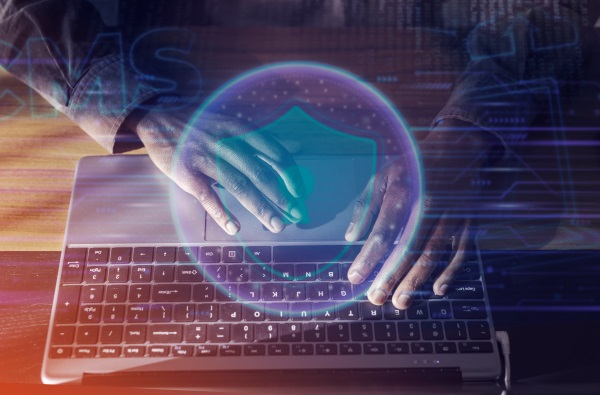
Cybersecurity is critical in today's environment. To demonstrate its important role, examine these concrete scenarios:
1. Suppose the world is without cybersecurity:
1. Personal identity theft: Your credit card information, social security number, and even medical information could be easily accessed by hackers, resulting in financial devastation, violations of privacy, and potential health hazards.
2. Widespread disruption: Cyberattacks might cripple critical infrastructure such as electricity grids, hospitals, and communication networks, causing chaos and putting lives in danger.
3. Erosion of trust: With widespread data breaches and cybercrime, online relationships may become laden with mistrust and dread, stifling innovation and collaboration.
2. Let's compare that to an era where cybersecurity is emphasized:
1. Peace of mind:
You may shop, bank, and converse online knowing that your information is secure.
2. Robust infrastructure:
Our critical systems are protected against cyber-attacks, assuring continuous access to electricity, healthcare, and other crucial services.
3. A healthy digital landscape
allows businesses to function safely, promoting innovation, economic progress, and global connectedness.
4. Cybersecurity protects personal data, financial matters, and online activities, enabling for safe internet use.
1. For enterprises,
it protects their assets, credibility, and consumer data while also assuring stability, growth, and regulatory compliance.
2. For society as a whole,
it fosters faith in technology, strengthens essential infrastructure, and supports national security, resulting in a more secure and prosperous future for all.
5. Protecting Data Privacy:
Cybersecurity measures help to keep sensitive and private data from being used or stolen by unauthorized parties. This includes financial information, personal details, intellectual property, and more.
6. Preventing Financial Loss:
Cyber assaults can cause financial losses for businesses and individuals by stealing, scamming, or disrupting services. Strong cybersecurity measures can reduce these risks and avert financial losses.
7. Protecting Infrastructure:
Nuclear power plants, transportation systems, and healthcare facilities all rely on secure networks to function. Cybersecurity safeguards these networks from attacks that could interrupt critical services.
8. Building Trust:
In the digital age of today, trust is critical for businesses and organizations. A cybersecurity compromise can erode trust among consumers, partners, and stakeholders, resulting in reputational damage and business loss.
9. Ensuring National Security:
Cybersecurity is vital for national security because cyberattacks may impact government organizations, military networks, and other key infrastructure. Protecting these valuables is essential for a nation's security and peace of mind.
10. Promoting Digital Innovation:
While technology advances, cybersecurity is critical to allowing innovation while managing associated risks. Strong cybersecurity measures enable firms to confidently implement new technologies.
11. Compliance and law requirements
for cybersecurity apply to many industries. Adherence to these standards is not only required to avoid penalties but also to safeguard confidential data and maintain customer trust.
12. Furthermore, the changing nature of technology needs ongoing attention to cybersecurity:
13. Emerging dangers:
As technology progresses, so will cyber-attacks. Upgrading safety protocols to keep up with these developing threats is critical.
14. The Human Factor:
Social engineering and phishing scams exploit human vulnerabilities. Raising awareness and encouraging safe internet practices is critical.
15. Global Collaboration:
Cybercrime has no borders. Global cooperation and information sharing are essential for developing efficient military strategy.
The cyber security concerns for 2024 are complicated and ever-changing. Here are some suggestions on how to interact with them.
1. Develop a solid security posture.
This involves using up-to-date security software, secure passwords, and a multi-layered security approach.
2. Keep up with the latest hazards.
Cybercriminals are constantly developing new ways to create an issue, so it's vital to stay up to date on the latest hazards.
3. Educate your staff.
Employees frequently represent the weakest link in the security chain. Ensure they are aware of the most recent threats and how to defend themselves.
4.Have a strategy in place.
If you are attacked, you should have a strategy in place to react promptly and effectively.
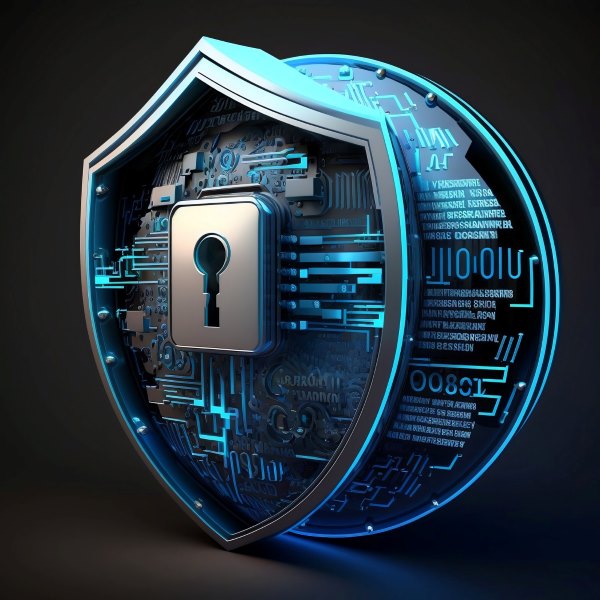
1. Use a password manager.
A password management system may help you create and save unique, safe credentials for all of your online accounts.
2. Take care what you click on.
Cybercriminals commonly use phishing emails and inappropriate websites to obtain authorization to your systems. Take care while clicking on links or opening attachments.
3. Maintain your software up to date.
Software updates typically include updates for security that can help defend you from identified weaknesses.
4. Use a firewall.
A firewall can safeguard your computer from illegal access.
5. Make regular backups of your data.
If your computer becomes attacked with malware or the information is taken, having a backup can help you recover your data.
6. Enable two-factor authentication.
Set up two-step verification on all of your websites to give an extra degree of security.
7. Be wary of unsolicited emails.
particularly those requesting personal or financial information or containing suspicious links or attachments.
8. Educate Yourself:
Reading cybersecurity blogs and attending cybersecurity training programs will keep you up to date on the latest cybersecurity dangers and best practices.
1. India's cybersecurity business is an opportunity on the international stage, with rapid growth and enormous potential. Here are some important themes impacting India's cybersecurity landscape:
2. Government Focuses on Cybersecurity: Recognizing the importance of digital security, the Indian government has launched several projects, including Digital India, MeitY's Cyber Suraksha Challenge, and CERT-In's active role in threat detection and incident response. These measures are driving industry growth and creating a cybersecurity-aware environment.
3. Cloud Security Takes Flight: As more enterprises and government agencies adopt cloud technology, demand for cloud-based security solutions such as data encryption, access control, and safety management is exploding. This area is expected to experience tremendous growth in both investment and creativity.
4.Mobile Security Gains Popularity: With India being a mobile-first country, safeguarding smartphones and mobile applications against malware, phishing, and data breaches has grown increasingly important. Mobile safety solutions, including mobile threat detection and endpoint protection, are in high demand.
5. SMB Focus: While major corporations have traditionally been the key investors in cybersecurity, the emphasis is increasingly changing to providing small and medium-sized businesses (SMBs) with accessible and cost-effective security solutions. Integrated safety services and subscription service approaches are gaining popularity in this market.
6. Growth in Talent and Skills deficit: Despite the industry boom, India has a major talent deficit in the cybersecurity sector. The government and commercial sector are working together to close this gap by implementing skill development programs, and training efforts, and boosting cybersecurity education.
7.Regulatory Landscape: India is aggressively creating a strong cybersecurity regulatory environment, including the Personal Data Protection Bill and the Indian Computer Emergency Response Team (CERT-In) Regulations. This will increase demand for compliance-based security solutions.
8. Focus on Native Solutions: The Indian government is actively pushing the development of locally developed cybersecurity solutions to reduce reliance on international suppliers and stimulate domestic innovation. This initiative opens up new potential for cybersecurity firms and research organizations.
9. The Rise of AI and ML: As Indian companies recognize the promise of Artificial intelligence and ML for use in threat detection, incident response, and exposure management, they are progressively implementing these technologies within their privacy platforms.
10.Awareness of Cybersecurity Programs: Creating a cyber-aware society is critical. Public awareness campaigns and educational initiatives are being established to teach people about online safety, cyber hygiene, and phishing scams.
11. Specific aspects of Indian cybersecurity:
1. The role of CERT-In in India's cybersecurity environment.
2. Challenges encountered by Indian SMBs when establishing comprehensive cybersecurity safeguards.
3. Successful Indian cybersecurity businesses and their unique solutions.
4. Government activities and regulations shape the coming years of Indian cybersecurity.
12. Global Cybersecurity Trends in Indian Context:
1. The effect of artificial intelligence and machine learning on the Indian cybersecurity business.
2. The zero-trust paradigm is gaining traction in Indian organizations.
3. International concerns and cyber risks confront India.
4. India's contribution to worldwide cyber research and development.
13.Future of cybersecurity in India:
1. Forecasting the probable future development of the Indian cybersecurity industry.
2. Emerging trends and technology will influence the future of Indian cybersecurity.
3. Challenges and possibilities for developing a trained and varied cybersecurity profession in India.
4. India's possible effects on global cybersecurity legislation and standards.
In general, the Indian cybersecurity sector is flourishing, thanks to a combination of factors. By tackling the skill gap, encouraging innovation, and creating secure virtual surroundings, India can cement its place as a global cybersecurity leader.
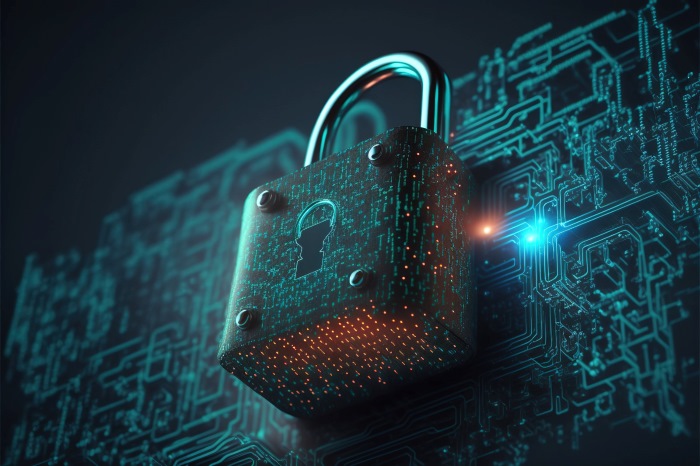
1. The Advancement of AI and Machine Learning:
1. Predictive Threat Detection: AI systems are being trained to evaluate large volumes of data and detect possible dangers before they occur.
2. Automated Incident Response: AI-powered solutions can speed up incident response by automating operations such as threat containment and vulnerability mitigation.
3. Deepfake Detection: As deep fakes become more advanced, artificial intelligence can help discern between actual and modified videos, defending against misleading and fraud.
2. Decentralization Revolution:
1. Blockchain for Secure Data Sharing: The inherent security and traceability of blockchain technology have the potential to transform how sensitive data is shared and kept within and outside of businesses.
2. Zero-Trust Security Model: Decentralized identity management and safe multi-party computing can help to overcome the limits associated with conventional perimeter-based safety, resulting in a more trustworthy and robust architecture.
3. Distributed Denial of Service (DDoS) Mitigation: Blockchain-based DDoS protection solutions offer an additional powerful and distributed approach to combating these crippling attacks.
3. Quantum Computing Conundrum:
1. Encryption breakthroughs: Although quantum computing offers significant challenges regarding current cryptography standards, it also provides the prospect of inventing impenetrable post-quantum cryptography.
2. Enhanced Threat Modeling: Realizing how quantum technology can be exploited to circumvent existing security measures is critical for designing proactive countermeasures.
3. Collaboration and Innovation: International cooperation among academics, governments, and technology businesses is critical in preparing for the possible effects of quantum computing on cybersecurity.
4. The Human Factor Remains Key:
1. Social engineering tactics: With technological advances, fraudsters continue to exploit human weaknesses. Phishing operations and manipulative psychological strategies necessitate continuous training in awareness and security education.
2. Insider Threats: Protecting against harmful insiders necessitates sophisticated surveillance systems, access controls, and a strong sense of security within businesses.
3. The Cybersecurity Workforce Challenge: Demand for trained cybersecurity workers is outpacing supply. Addressing the skill difference by specific training programs and encouraging diversity in the profession is critical.
5. Growing Geopolitical Landscape:
1. Cyber Warfare and Espionage: Cyber Attacks are increasingly being used for political and military goals, emphasizing the importance of international cooperation and stronger cyber defense.
2. Data Sovereignty and legislation: Data confidentiality and safety concerns drive stronger legislation and national data sovereign efforts, influencing how organizations run and handle data.
3. Attribution and Accountability: In today's globalized digital landscape, attribution and accountability for cyberattacks remain complicated challenges.
1. Marriott Data Breach (2018): An Overview of Supply Chain Vulnerabilities:
Challenge: Hackers gained access to the personal information of thousands of Marriott guests via a breached external vendor's networks.
Solution: Marriott took action by investing in more thorough vendor security audits, strengthening data encryption, and implementing tougher data access rules.
Result: Increased transparency and proactive repair, incident response methods have improved, and the brand's reputation has been strengthened.
2. Tesla's "Bug Bounty" Programme: Collaboration Security for Autonomous Vehicles:
Challenge: Maintaining the confidentiality of software and systems that drive autonomous vehicles, which is critical for customer safety and trust.
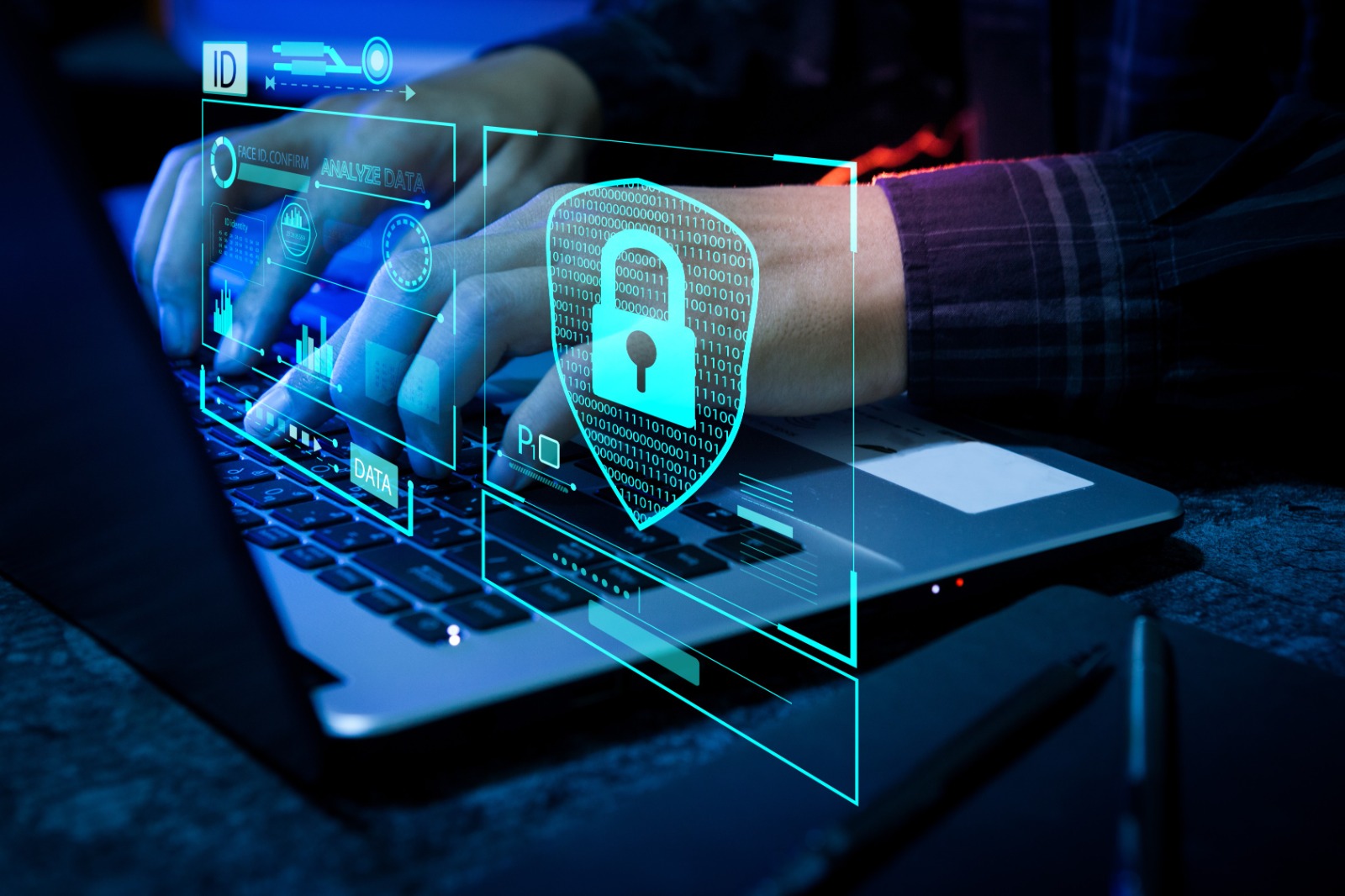
2. Tesla's "Bug Bounty" Programme: Collaboration Security for Autonomous Vehicles:
Challenge: Maintaining the confidentiality of software and systems that drive autonomous vehicles, which is critical for customer safety and trust.
Solution: Tesla launched a public "bug bounty" program, offering financial incentives for identifying and reporting software flaws.
Result: Discovered and repaired numerous of security holes before any real-world occurrences occurred, developed a community of ethical hackers that contribute to security, and increased public trust in Tesla's technology for self-driving cars.
3. Domino's "Zero Data" Security Philosophy: Protecting Customer Data During Food Delivery:
Challenge: Reducing security risks connected with gathering and keeping customer data in e-commerce and delivery platforms.
Solution: Domino's developed a "zero data" policy, which reduced collected customer information, used encoding for payment details, and focused solely on order functionality.
As a consequence of our open and privacy-conscious approach, we lowered the possibility of threat surfaces, decreased the risk of information incidents, and boosted customer trust.
4. Capital One Hack (2019): The Value of Employee Training:
Challenge: An employee phishing attack resulted in a massive data breach, revealing countless customers' details.
Solution: Capital One implemented obligatory cybersecurity training for everybody at the company, improved phishing detection and prevention, and engaged in employee awareness initiatives.
Result: As a result, we are less vulnerable to future phishing assaults, have enhanced our whole cybersecurity position, and have exhibited a commitment to protecting consumer data.
5. Sony Playstation Network Outage (2011): Building Trust Following a Major Breach:
Challenge: A large hack caused a network outage, revealing the confidential data of millions of PlayStation players.
Solution: Sony provided free personal information safeguards, enhanced server security, and established stricter user authentication processes.
Result: Restored client trust through proactive actions and transparency, upgraded network security structures, and acted as a warning to other online gambling businesses.
6. Uber Ransomware Attack (2020): Developing Durability in Transportation Networks:
Challenge: Hackers gained access to the internal networks and requested a ransom, interrupting operations and generating privacy issues.
Solution: Uber quickly contacted authorities, collaborated with cybersecurity specialists, and strengthened data access controls.
Result: As a result, no customer data was lost, internal systems were rapidly restored, and the events triggered industry discussions about transportation network security.
7. The Equifax Data Breach (2017): The Benefits of Continuous Data Monitoring:
Challenge: Unpatched vulnerabilities in Equifax systems allowed hackers to access millions of Americans' confidential data.
Solution: Equifax improved stricter data monitoring protocols, engaged in security assessments, and provided complimentary credit freeze services to concerned clients.
Result: a greater focus on active data security and managing vulnerabilities across businesses, emphasizing the necessity of constant surveillance and updating.
8. Target Data Breach (2013): Reconsidering Payment Security in Retail:
Challenge: Hackers put malware on Target point-of-sale systems, compromising the credit card details of millions of customers.
Solution: Target improved its payment security facilities engaged in chip-and-pin technology, and worked with authorities to bring down the attackers.
Result: As a result, chip-and-pin technology was widely adopted in the industry, payment security rules were strengthened, and the need for coordination between enterprises and law enforcement was highlighted.
9. WannaCry Ransomware Attack (2017): A Global Wake-up Call for Patching and Awareness:
Challenge: A major ransomware outbreak infected systems worldwide, causing disruptions in healthcare facilities, companies, and government organizations.
Solution: Microsoft issued emergency security fixes, governments and organizations conducted education programs, and global collaboration resulted in the attackers' removal.
Result: As a result, worldwide knowledge of cyber risks has increased, as regular updates to software and updates for security, emphasize the importance of global collaboration in tackling cybercrime.
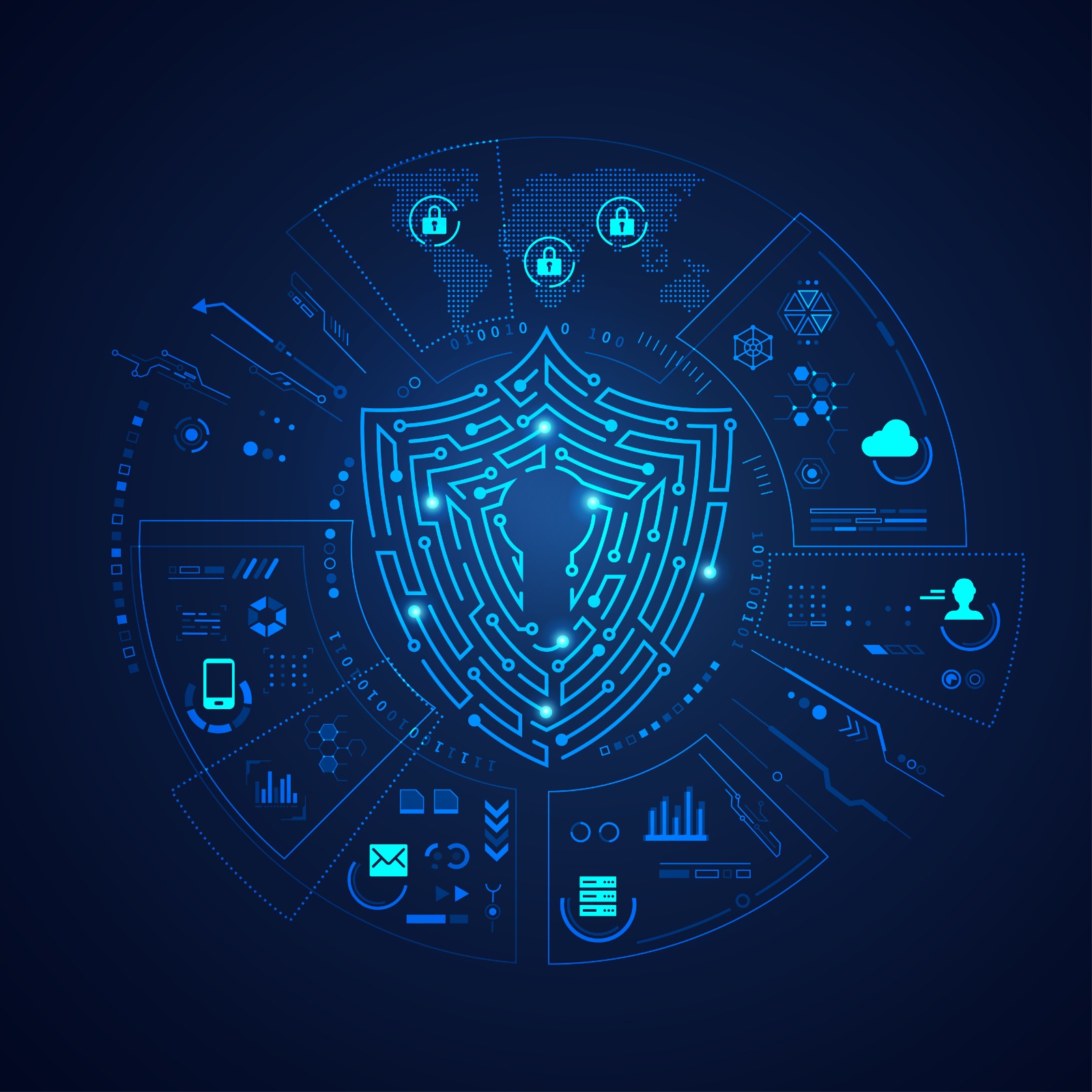
1. Automation and AI-Driven Security Solutions
To address the complexity and volume of threats, security solutions are becoming increasingly automated. Expect solutions like autonomous incident handling, AI-powered threat hunting, and healing systems to become more widespread.
2. Cloud Security Takes the Lead
With growing cloud adoption, the security of cloud infrastructure and apps is crucial. We will see an increase in demand for digital-native security solutions, legal tools, and cloud data security.
3. Focus on the Interpersonal Element
As social engineering strategies evolve, user knowledge and instruction become increasingly important.
Expect more Security Awareness and Training (SAT) solutions, along with a focus on creating a security-conscious culture within businesses.
4. Zero-Trust Architecture Gains Momentum
The old perimeter-based security strategy is losing way to the "Zero-Trust" method, in which every access request is validated and constantly watched. The widespread implementation of zero-trust network access (ZTNA) and identity and access management, also known as IAM, systems will increase.
5. The merge of IT and security
The distinction between information technology and security is becoming less clear. IT teams must adopt a "security-first" approach and include security considerations in all stages of the software development lifecycle (SDLC).
6. Cybersecurity skills need to persist
The demand for competent cybersecurity workers continues to outweigh the supply. To solve this gap, look for new solutions like as upgrading programs, boot camps, and talent marketplaces.
7. Increased Regulations and Compliance
Data privacy legislation, such as GDPR and CCPA, are driving the demand for compliance-oriented security solutions. Companies will have to make investments in tools and practices to protect their data and avoid severe penalties.
8. Concentrate on Ransomware and Supply Chain Attacks
Ransomware remains a significant concern, and supply chain attacks are growing more regularly. This will increase the market for enhanced threat detection and desktop security solutions.
9. Emerging technologies present new challenges
The growth of technologies such as IoT, blockchain, and quantum computing has resulted in new security risks. We will see the emergence of unique security solutions designed specifically for these emerging sectors.
10. Cybersecurity as a Service (CSaaS) Gains Momentum
Organizations are increasingly using managed security services to meet their cybersecurity requirements. We will see an increase in CSaaS products that include monitored detection and response (MDR), vulnerability management, and security information and event management (SIEM).
These are only a handful of the numerous trends influencing the cybersecurity sector. Organizations may secure their precious assets and stay ahead of emerging cyber threats by remaining aware and adjusting to these changes.
While other sorts of IT employment, such as network technicians or software engineers, have become more common and popular, cyber security positions are few but growing in importance. As our global economy has resulted in increased Internet-based computing and communication around the world, enterprises have become increasingly exposed to hacking and cyber-attacks. And, similarly to how a business may hire security even if there is a nearby law enforcement force, a firm must employ cyber security personnel. Finally, the firm has to safeguard its confidential data as well as any consumer information that it has access to.
However, cyber security experts are in limited supply. Companies such as KPMG have increased the number of their cyber security groups over the past few years.
Several causes have contributed to the current, overwhelming requirement for cyber security.
1. The digital India initiative and demonetization
According to Ashok Pamidi, senior director of NASSCOM, while government programs such as the Digital India initiative and demonetization have pushed businesses toward digital transformation, they have additionally rendered them vulnerable to cyber-attacks.
As a result, there is a growing need for cybersecurity experts who can assist businesses in achieving digital transformation while maintaining security.
2. General Data Protection Regulation(GDPR)
Although the GDPR did not go into effect until late May 2018, firms worldwide have been planning to protect their databases from cybercrime and comply with GDPR. This has created a demand for cybersecurity expertise.
3. The consequences of WannaCry ransomware
Exactly a year ago, in May 2017, government agencies and businesses all around the world fell victim to the WannaCry ransomware, which affected over 200,000 systems in 150 countries in just three days. According to the most recent estimates, the damage totaled thousands of rupees.
The hack sparked debate about the risk of data and the urgent need for tighter internet regulations and security mechanisms. It has also raised awareness of the dangers of cyber security flaws, prompting many organizations to take precautions to protect themselves from future assaults.
Regardless of the causes for the growth in demand, the immediate issue is a lack of educated and capable individuals to fill an increasing variety of cyber security tasks. NASSCOM claims that, despite having the world's largest IT talent pool, India lacks experienced cyber security workers. There is such a huge demand for experienced professionals that corporations are willing to offer top staff a premium salary of Rs 1.5 to 4 crore. This has boosted cyber security spending by 71%, according to PwC's 2016 study.
Cybersecurity specialists are highly competent and trained individuals who safeguard your data, networks, systems, and devices against dangerous threats, cyber-attacks, phishing assaults, and illegal access.

Protecting your data, client information, cloud, and mobile networks and systems is difficult.
However, in addition to the necessary knowledge, cybersecurity personnel are very creative, enthusiastic about research, have a sharp eye for detail, and are constantly on the lookout for novel solutions to unusual situations.
A cybersecurity profession in India is in great demand, owing to the growing demand for IT specialists and cyber-focused individuals. A cybersecurity professional's primary role is to secure an organization's important data and networks. A cybersecurity analyst is another designation for a cybersecurity professional. As the name implies, a cybersecurity analyst examines and responds to cyber threats and infections on your computer systems, data, and information.
India is currently experiencing a surge in cyber security jobs. Being a successful and practical cybersecurity practitioner requires more than just an innovative outlook and out-of-the-box attitude.
Cybersecurity is a relatively recent job option in the field of information technology sector. Thus, there are numerous paths to becoming an analyst in cybersecurity or an expert. Individuals who want to work in this high-demand business must have an undergraduate degree in computer science, information technology, engineering, programming, or a related discipline.
To become a leading cybersecurity personnel, you must have the necessary technical experience. Companies, on the other hand, are approaching the hiring of cybersecurity experts uniquely in a unique way. One of the finest options is to receive cybersecurity training and certification. You can also learn and master programming languages such as Python, Java, HTML, C++, and others.
In addition, you must comprehend the foundations of cybersecurity, as well as the demands of the present IT sector or the company. Thoroughly learning and comprehending these principles, as well as putting them into technological practice, can help you get started in your cybersecurity profession.
1. Network Security Engineer
This is critical for every organization's cybersecurity team. A network security engineer is in charge of protecting firm assets from threats. This function requires a thorough quality check on building, deploying, and defending the organization's comprehensive security systems.
2. Cyber Security Analyst
A Cybersecurity Analyst's major responsibility is to implement security measures that counter and block threats. This profession requires identifying system vulnerabilities and maintaining systems.
3. Security Architect
Security Architects are responsible for building the organization's network and computer security architecture. This function requires thorough research, planning, and design of security features.
4. Cyber Security Manager
When a corporation experiences IT challenges or network breaches, the cybersecurity manager oversees and begins implementing a plan of action. A manager devises and performs a management methodology for detecting and resolving software and network hazards.
5. Chief Information Security Officer (CISO)
PWC reports that more than 80% of organizations now employ a CISO, or Chief Information Security Officer, on their executive team. This increase demonstrates that businesses have become more aware of the dangers of cybercrime and the possible harm such attacks can inflict. They attend events and implement relevant standards and procedures to reduce security risks without disrupting corporate operations. Professionals are also in charge of ensuring that the organization's security rules and procedures are followed.
6. Security Analysts
1. Checks systems and networks for unusual activity.
2. Examine security issues and detect potential risks.
3. Establishes and enforces security rules and procedures.
7. Ethical hacker (penetration tester)
1. Analyses system and Networking vulnerabilities using simulated attacks.
2. Recommends patching measures to address issues.
3. Keep up to date with the latest hacking tactics and tools.
8. Security Engineers
1. Designing and implementing safe systems and networks.
2. Set up and support security hardware and software.
3. Assesses security threats and recommends mitigating options.
9. Incident Response Specialists
1. Addresses security incidents in real time to minimize harm.
2. Investigate the cause of the incident and implement corrective measures.
3. Communicate the circumstances to stakeholders and facilitate appropriate recovery.

10. Cloud Security Specialist
1. Secures cloud infrastructure and applications.
2. Implements cloud-specific compliance standards.
3. Maintains the security of data that is kept in the online environment.
11. Threat Intelligence Analyst
1. Collects and analyzes information on cyber risks.
2. Tracks cybercriminals' actions and evaluates potential hazards.
3. Creates intelligence reports to guide security decisions.
12. Cybersecurity Lawyer
1. Provides legal advice to businesses on cybersecurity-related matters.
2. Creates and analyzes cybersecurity rules and regulations.
3. Supports customers in cybersecurity lawsuits.
Each position will require different abilities and experience, but some typical criteria include:
1. Excellent technical capabilities, including knowledge of networking, operating systems, and security technologies.
2. Analytic and problem-solving abilities.
3. Excellent communication and collaboration abilities.
4. Ability to stay current on the newest cybersecurity threats and developments.
The Increase in Cybersecurity Degrees
Cybercrimes pose a hazard to everyone. Cybersecurity breaches, such as ransomware assaults, malicious software, and identity theft, threaten people and companies worldwide.
Businesses are recruiting more cybersecurity specialists to safeguard themselves against cybercrime and stay up with the ever-changing threat landscape.
As a result, additional specialized cybersecurity career opportunities exist. Organizations are currently looking for cyber security analysts, risk assessment analysts, network security engineers, application safety engineers, and other specialist cyber security positions.
Cybersecurity is a constantly evolving subject that requires a varied skill set to deal with continually shifting threats. If you're thinking about a career in this interesting field, here are some important skills you'll want to develop:
1. Technical expertise:
1. Networking: A solid knowledge of computer networks, procedures, and security principles is required. Think about firewalls, encryption, and segmentation of networks.
2. The Operating Systems: Knowledge of key computer systems such as Windows, Linux, and macOS is required, as each has unique vulnerabilities and security features.
3. Scripting and programming: Languages such as Python and Bash are useful for automating operations and reviewing security logs. Programming experience in languages such as C++ or Java might be advantageous for designing security technologies.
2. Critical Thinking and Solutions to Problems:
1. Critical Thinking: Cybersecurity experts must assess complex situations, recognize dangers, and make rapid choices under pressure.
2. Attention to Detail: To discover and prevent security breaches, you must have a keen eye for irregularities and follow protocols meticulously.
3. Risk Evaluation and Management: The ability to identify, assess, and minimize cybersecurity risks is critical for securing an organization's data and systems.
3. Communication & Collaboration:
Written and verbal communication: You must convey complicated technical knowledge accurately to audiences that are technical as well as not.
Teamwork and Cooperation: Cybersecurity is frequently a collaborative effort involving IT workers, analysts, and management.
4. Flexibility and Constant Learning:
Cybersecurity is an ever-evolving area that is continually changing. Staying current on the latest risks, weaknesses, and technologies is critical for success.
A passion for information and an interest in developing new skills are prerequisites for any prospective cybersecurity expert.
5. Ethical hacking and testing for vulnerabilities:
Understanding the attacker's thoughts and tools is critical in developing effective defenses. Understanding ethical hacking skills can allow you to detect and exploit flaws before hostile actors do.
Penetration testing simulates cyberattacks to identify and correct security flaws. Mastering these abilities can lead to specialized and popular cybersecurity positions.
As sophisticated technologies change, cybersecurity specialists are always learning new techniques to assist them avoid and manage cyber threats to persons and enterprises. Here are a few talents needed for cybersecurity positions:
1. Fundamental technology skills
More sophisticated tasks, such as developing a system for the cloud or building access software, rely on an understanding and execution of core technical ideas, including:
1. Network Setup and Management
2. Firewall installation
3. Programming and administration of different operating systems
2. Programming
Programming and programming languages such as JavaScript are essential skills for cybersecurity professionals to possess. They can use these programming languages to create internal systems, and understanding them is critical to preventing hackers from utilizing them to gain access to the organization's data.
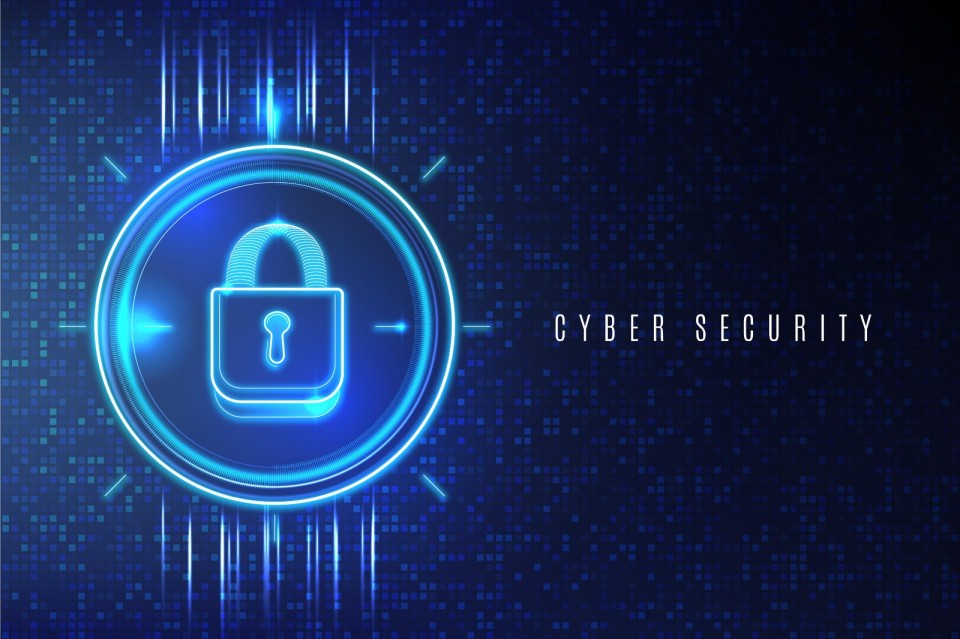
3. Risk Identification and Management
Identifying places that are open to internal or external modification is an important component of a cybersecurity specialist's job. Once you understand the hazards, you may devise effective measures to combat them. Risk management is a continual responsibility that necessitates constant surveillance and analysis.
4. Data Management and Analysis
As more businesses use technology to do business, they collect an increasing amount of data from both within and outside their enterprises. Cybersecurity specialists design systems to collect, organize, analyze, and safeguard this information. This means that handling and analyzing data are critical abilities for professionals in this industry.
5. Cloud Installation and Management
As businesses continue to adopt cloud computing to save money while also improving accessibility, cybersecurity specialists must understand these systems and processes, including monitoring access and assuring the company's data storage and transfer are secure across many cloud providers. Because of their growing popularity, cloud systems may be more enticing targets for hacking attempts. Cybersecurity professionals may also collaborate with IT teams to develop secure internal cloud solutions for an enterprise.
6. Logical analysis and solving
When difficulties occur in a company's online activities, the cause is not necessarily clear. Cybersecurity professionals are responsible for troubleshooting problems using their technical expertise and reasoning skills. These skills assist them in creating long-term solutions.
To pick the best cyber security program, you should analyze four key program characteristics: goodwill, education, cost, and employment opportunities. Looking through these can help you discover a program that meets your academic and professional objectives.
When choosing a cybersecurity course, there are several factors to consider to ensure it aligns with your goals and needs.
Here are some tips to help you make the right choice:
1. Identify your goals
What do you want to achieve with this course? Do you want to enter the cybersecurity field as a professional, or simply want to understand how to protect yourself online? Knowing your goals will help you narrow down your choices.
2. Consider your learning style
Do you prefer online or in-person learning? Do you learn best through lectures, hands-on labs, or a combination of both? Choose a course or institute that caters to your preferred learning style.
3. Research the course curriculum
What topics will be covered in the course? Does the curriculum align with your goals and interests? Make sure the course covers essential cybersecurity topics, such as network security, cryptography, and ethical hacking.
4. Check the instructor's qualifications
Who will be teaching the course? Are they experienced cybersecurity professionals with real-world expertise? Look for instructors with industry certifications and a proven track record of success.
5. Read reviews and testimonials
What do other students say about the course or institute? Check online reviews and testimonials to get a sense of the quality of the program and the instructor's teaching style.
6. Compare costs and schedules
How much does the course cost? Can you afford it? Consider the total cost of the program, including tuition, fees, and any required materials.
How does the course schedule fit with your commitments? Make sure you can realistically attend the classes or complete the online modules.
7. Ask questions
Don't be afraid to contact the course or institute with any questions you have. This is a great way to get more information about the program and see if it's a good fit for you.
Cybersecurity is crucial as it safeguards all types of data against theft and loss. This encompasses highly sensitive data, personally identifiable information (PII), protected health information (PHI), private details, intellectual property, data, and governmental and industry information systems. Without a cybersecurity program, your firm is unable to protect itself against data breach operations, making it an easy target for thieves.
Cyber dangers can originate from any tier of your organization. Workplaces must provide cybersecurity awareness training to educate employees on typical cyber dangers such as social engineering schemes, phishing, ransomware attacks (such as WannaCry), and other viruses that take intellectual property or personal data.
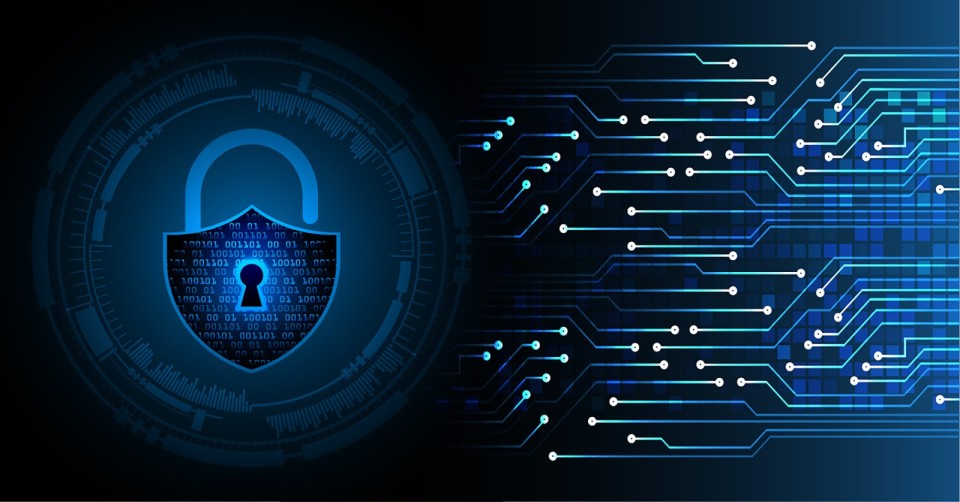
What is the effect of cybercrime?
Numerous elements influence the cost of cybercrime. All of these factors can be attributed to a need for more emphasis on adequate cybersecurity solutions.
A lack of interest in cybersecurity can hurt your organization in a variety of ways, including:
1. Economic Cost
Theft of intellectual property, corporate secrets, trading disruptions, and costly system repairs
2. Reputational Cost
Loss of consumer trust, loss of existing and future customers to adversaries, and negative media publicity.
3. Regulatory Cost
Cybercrimes may result in legal penalties or sanctions for your firm under GDPR and other data breach regulations.
1. Cyberattack on AIIMS
In December 2022, the Union government disclosed that the All India Institute of Medical Sciences (AIIMS) had been cyberattacked, resulting in the encrypting of around 1.3 gigabytes of data across five servers.
The Minister of Electronics and Information Technology described the occurrence as a "cyber security incident" caused by illegal access to the AIIMS network as a result of insufficient network segmentation.
The Indian Computer Emergency Response Team (CERT-In) analyzed the problem and proposed steps to mitigate the intrusion.
Meanwhile, in the Lok Sabha, Bharati Pravin Pawar, Minister of State for Health and Family Welfare, said that the attackers weren't requesting a specific ransom amount, but instead put a notice on the server suggesting a cyber attack.
The e-hospital data had been effectively restored from an untouched backup server, and most program functions were restored after a two-week recovery period.
2. Government apps on the line
A hacker on a forum claimed that MoChhatua, an Indian local governance app, was the victim of a data breach in May 2023.
The threat actor claimed that the breach revealed sensitive user data such as names, emails, and passwords. The software, built by Odisha's local Department of Women and Child Development, sought to electronically record and manage the delivery of ration supplies to beneficiaries.
3. Cyberabad police data leak
Before this April, the Cyberabad Police issued notices to over 11 groups, namely banks, a social media behemoth, an IT services company, an online insurance platform, and others, in response to a large data breach that affected people and organizations in India.
The police arrested Vinay Bhardwaj, a Faridabad resident, for his involvement with the data theft. Bhardwaj is accused of stealing, possessing, and selling personal and confidential information that belongs to individuals and organizations.
The stolen data contained GST information, client information from big firms, and student information from educational software businesses.
The Cyberabad Police undertook a detailed investigation into the unlawful database access and leaks, to identify security flaws and prevent future incidents.
4. Swachhta platform hacked, revealing citizens' secrets.
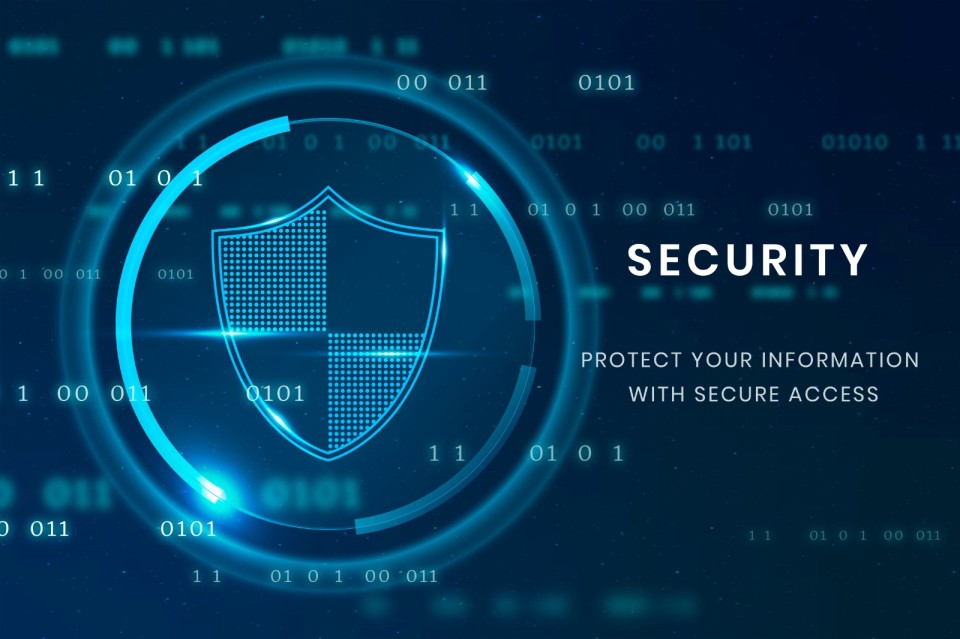
phishing attempts, such as false breach notice emails, and social engineering to get more sensitive information.
Furthermore, the stolen information may enable ransomware assaults, data theft, and data trading on cybercrime websites.
5. BharatPay hacked
In August 2022, BharatPay, an Indian digital financial services provider, suffered a severe data breach, exposing the personal information and transaction details of consumers.
Employees of Indian insurance and financial businesses have had their usernames, encrypted passwords, mobile phone numbers, UPI IDs, and professional email addresses hacked.
CloudSEK's threat intelligence arm, XVigil, detected the issue on August 13.
It was discovered that BharatPay's backend database, which contained customers' personal information, account balances, and transaction data from February 2018 to August 2022, was accidentally leaked on a cybercrime site.
BharatPay works in 11 Indian states and serves consumers as well as businesses through a network of over 50,000 retail establishments.
The importance of the data breach stems from the disclosure of confidential data such as user PII, financial data, and records of transactions.
The hacked database also included API keys for online bill payment providers and information on SMS vendors.
Callback response logs including sensitive facts such as phone numbers, transaction IDs, and bank balance amounts, which are critical for financial transactions between companies, have been disclosed.
6. RailYatri data breach
1. Incident Response Capabilities: India has been working to improve its incident response skills to handle cyberattacks and breaches of security more efficiently. Organizations like the Indian Computer Emergency Response Team (CERT-In) play an important role in organizing cyber event responses and providing recommendations on best practices.
2. R&D investments: Both the Indian government and the commercial sector are investing in cybersecurity research and development (R&D). This includes financing for cybersecurity research projects focusing on the use of encryption, artificial intelligence (AI) for cybersecurity, and safe software development techniques.
3. Cybersecurity Education and Training: India is seeing an increase in the number of institutions of learning offering cybersecurity-specific courses and certifications. These programs address the growing demand for competent cybersecurity experts and help to develop talent pools in the Cybersecurity Regulations and Standards. India has been working towards establishing cybersecurity regulations and standards to ensure the security and privacy of digital infrastructure and data. Compliance with these regulations is driving the adoption of cybersecurity measures across industries.
4. International Recognition: Indian cybersecurity firms and professionals are receiving international recognition for their skills and services to the global cybersecurity community. This accreditation encourages partnerships and cooperation with international organizations, which strengthens India's standing in the cybersecurity scene.
5. Cybersecurity Innovation Centers: Cities such as Bangalore, Hyderabad, and Pune have become known as cybersecurity innovation centers, attracting a concentration of cybersecurity enterprises, universities, and startups. These hubs encourage innovation, sharing of information, and opportunities for networking in the cybersecurity field.
6. Focus on emerging technologies: India has been concentrating on emerging technologies like blockchain, the Internet of Things (IoT), and the use of cloud computing, which pose new cybersecurity challenges. This focus opens up the potential for cybersecurity specialists and businesses to create particular approaches for protecting such technologies.
7. Cost-effectiveness: India is a relatively affordable place for enterprises to establish operations, making it appealing to cybersecurity organizations trying to expand their worldwide footprint.
8. Government support: The Indian government is substantially investing in cybersecurity and has announced several programs to encourage the industry's growth. These initiatives include the formation of the National Cyber Security Agency (NCISA) and the implementation of the Digital India program.
Growing digital economy: India's digital economy is growing rapidly, which is creating a demand for cybersecurity products and services.

However, there are also some challenges that India needs to overcome to fully realize its potential as a cybersecurity hub:
1. Lack of skilled professionals: While India has a large talent pool, there is a shortage of skilled cybersecurity professionals. The government and industry need to do more to train and upskill the workforce.
2. Infrastructure: India's IT infrastructure is not as developed as in some other countries, which can be a challenge for cybersecurity companies.
3. Cybersecurity awareness: There is a lack of awareness about cybersecurity among businesses and individuals in India. This needs to be addressed through education and outreach programs.
As we approach 2024, the cybersecurity landscape in India provides a complicated set of problems and evolving threats. The use of new technologies such as AI and machine learning, the increasing significance of cyber security, and the constant human aspect all highlight the necessity for strong, proactive cybersecurity policies.
Imagine your house is your computer system, and everything inside is your data. Cyber security is analogous to installing locks on your doors and windows (firewalls), having an alarm system (intrusion detection), and keeping your valuables in a safe (encryption) to protect them from robbers (hackers).
Cybersecurity, sometimes called information security or IT security, is the process of protecting computer systems, networks, programs, devices, and data from unauthorized access, use, disclosure, disruption, modification, or destruction. It is simply a multilayered method of protecting all digital assets from hostile attacks.
The topic is gaining relevance as people rely more on computer systems, the Internet, and wireless network technologies like Bluetooth and Wi-Fi, as well as the development of "smart" gadgets like smartphones, televisions, and the numerous devices that make up the "Internet of Things".
1. People- It consists of the following:
1. Security Awareness and Training: Educating staff and users about cyber hazards, best practices, and how to detect suspicious activity is vital. This enables individuals to serve as the first line of protection against a wide range of cyberattacks.
2. Strong Passwords and Authentication: Using difficult passwords, multi-factor authentication, and effective password management procedures dramatically minimizes the danger of unauthorized access.
2. Processes- It includes:
1. Incident Response Plan: Having a well-defined plan for detecting, responding to, and recovering from security incidents reduces damage and downtime.
2. Risk Management: Regularly monitoring potential threats and vulnerabilities in systems and data allows security activities to be prioritized and resources allocated more effectively.
3. Change Management: Using a systematic approach to introduce changes to systems and data reduces the chance of introducing new vulnerabilities.
3. Technology- It includes:
1. Firewalls operate as gatekeepers, filtering inbound and outbound traffic to prevent harmful activities.
2. Intrusion Detection and Prevention Systems (IDS/IPS): These systems monitor network traffic and system activities for unusual behavior and can intervene to prevent attacks.
3. Antivirus and antimalware software: Up-to-date security software protects devices against malware attacks.
4. Data Encryption: Encrypting sensitive data at rest and in transit protects it even when intercepted.
5. Backup and Disaster Recovery: Backup data regularly and have a disaster recovery strategy.
4. Additional elements:
1. Network security includes segmentation, access controls, and monitoring to prevent unwanted lateral movement within the network.
2. Application Security: Implementing secure coding techniques and doing frequent vulnerability checks for applications reduces the possibility of exploitation.
3. Physical Security: Preventing unwanted tampering requires safeguarding physical access to devices and data centers.
4. Security Culture: Instilling a culture of cyber awareness and accountability inside an organization pushes everyone to prioritize security measures.
Causes of Cyber Attacks in India
India has experienced a considerable increase in cyberattacks in recent years. Here are some of the top causes:
1. Increased Internet penetration:
India's fast-rising internet user base increases the number of potential victims of hackers.
2. Digital Transformation and the E-Commerce Boom:
The proliferation of online banking, digital transactions, and e-commerce platforms makes them ideal targets for attackers looking to steal financial data or disrupt operations.
3. Lack of Cybersecurity Awareness and Education:
Many individuals and companies lack a thorough awareness of cyber dangers and best practices, leaving them exposed to social engineering assaults, phishing schemes, and malware.
4. Weak cybersecurity infrastructure:
Outdated systems, insufficient security procedures, and a scarcity of skilled cybersecurity personnel expose firms to vulnerabilities that hackers can exploit.
5. Financial gain:
Stealing financial information, such as credit card numbers or bank account passwords, is a primary motive for hackers in India.
6. Espionage and Data Theft:
Sensitive corporate data, intellectual property, and government information may be targeted by foreign parties or competitors looking for an advantage.
7. Disruption and chaos:
Cyberattacks can be initiated to disrupt key infrastructure, enterprises, or government services. This could be motivated by political reasons or merely evil intent.
8. Insider Threats:
Disgruntled workers, contractors, or vendors with access to internal systems can pose a serious security risk if they abuse their positions.
9. Evolving Threats and Techniques:
Cybercriminals are always devising new techniques and abusing newer technologies. Organizations must stay up-to-date on the latest threats and adjust their security defenses accordingly.
10. Legacy System and Software:
Many firms in India continue to rely on out-of-date systems and software, which may have known vulnerabilities. Upgrading and fixing these systems is critical to maintaining a solid security posture.
According to the NITI Aayog report, internet risks have increased significantly over the last decade.
Cyber assaults expose the following:
1. Sensitive Information
2. Personal Information, and
3. Business Information
Cyber Attacks Types
India, like many other countries, confronts a wide range of cyberattacks. Here's a breakdown of some typical varieties found in India:
1. Social engineering and phishing:
These assaults trick users into disclosing confidential information or clicking dangerous links. Phishing emails frequently imitate legitimate institutions (banks, government agencies) to deceive consumers into providing personal information or downloading malware.
2. Malware Attacks:
Malicious software, such as viruses, ransomware, and spyware, can infect systems, steal data, disrupt operations, or hold information hostage for ransom.
3. Ransomware attacks:
This particular sort of malware encrypts a victim's data, making it unavailable. The hackers then demand a ransom payment to decode the data. Ransomware attacks have hit key infrastructure and businesses in India.
4. Denial of Service (DoS) Attacks:
These assaults flood a website or server with traffic, rendering it inaccessible to legitimate visitors. DoS attacks can impair web services and result in severe financial losses.
5. Man-in-the-Middle (MITM) Attacks:
Hackers intercept communication between two parties, such as while utilizing public Wi-Fi, to steal information or divert visitors to dangerous websites.
6. Supply Chain Attacks:
Attackers target a company's vendors or suppliers to acquire access to their systems and eventually infiltrate the main target organization.
7. Mobile Malware:
The proliferation of smartphones has made them a target for malware meant to steal personal information, track user activities, or transmit spam messages.
8. Internet of Things (IoT) Attacks:
As more devices connect to the internet, vulnerabilities in IoT devices can be exploited to launch large-scale assaults or construct botnets (networks of compromised devices) for future attacks.
9. Cryptojacking:
This entails using a computer's processing capacity to mine cryptocurrencies without the owner's knowledge or agreement. It's worth noting that cybercriminals are always innovating and creating new attack methods.
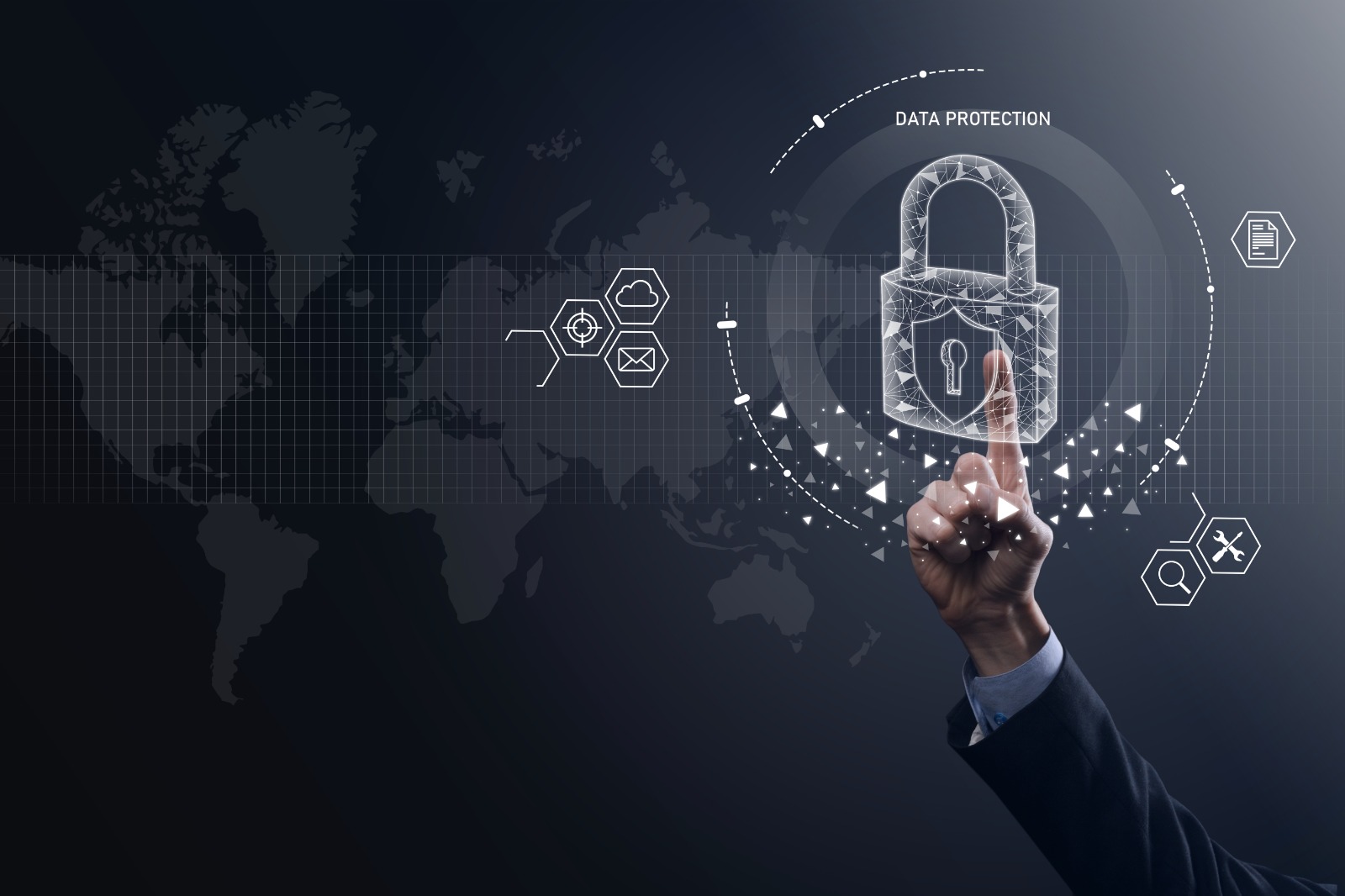
Cybersecurity is becoming more vital in today's interconnected world. As more data is stored and transmitted electronically, the likelihood of cyber-attacks grows.
Here's why cyber security is essential:
1. Protects Your Data:
Cyberattacks can steal your login credentials, financial information, and even personal documents. Strong cyber security protects this sensitive information while reducing the danger of identity theft or fraud.
2. Safeguards your devices:
Malware and other cyber-attacks can harm or disable your devices, causing data loss and interruption. Cybersecurity safeguards safeguard your gadgets and guarantee they work properly.
3. Secures your internet transactions:
With the rise of e-commerce and online banking, cyber security is critical for safeguarding your financial information during online transactions. Encryption and other security measures ensure that your money and financial information are protected.
4. Maintains business continuity:
Cyberattacks can devastate businesses by disrupting operations, resulting in data breaches, and harming their reputation. Robust cyber security enables firms to maintain continuity and avoid downtime.
5. Protects critical infrastructure:
Cyberattacks can target important infrastructure such as power grids, transportation systems, and hospitals. Strong cyber defenses are required to protect these critical systems and ensure their proper operation.
6. Maintains national security:
Cyberattacks can be used to conduct espionage or undermine national security efforts. Cyber security protects sensitive government information and crucial national infrastructure.
7. Enables Informed Decisions:
Individuals who understand cyber dangers and best practices can make informed judgments about their online activities and avoid falling victim to fraud or viruses.
8. Builds trust in the digital world:
Strong cybersecurity promotes trust in online interactions and transactions. It reassures individuals and businesses that their data and systems are secure, encouraging further engagement in the digital economy.
Cybersecurity is a continuous effort, not a one-time fix. We can all help to make the digital world more secure for everyone by putting strong security measures in place, remaining updated about risks, and following safe online behaviors.
The ever-changing world of cyber security provides numerous obstacles for both individuals and corporations. Here's a breakdown of some of the most significant hurdles:
1. The Changing Threat Landscape: Cybercriminals are continually inventing new techniques and abusing newer technologies. Staying up to date on the latest threats and adjusting security defenses properly is an ongoing challenge.
2. Human Error: Individuals are frequently the weakest link in the security chain. Phishing emails, social engineering assaults, and a lack of understanding of cyber dangers can all lead to human error, jeopardizing security.
3. Legacy Systems and Software: Many companies continue to rely on out-of-date systems and software that contain known vulnerabilities. Upgrading and patching these systems is critical, but it may be a difficult and time-consuming operation.
4. Skills Shortage: The demand for trained cybersecurity specialists far exceeds the available workforce. This scarcity makes firms exposed and impairs their ability to properly handle cyber risks.
5. Complexity of Security Solutions: Some firms may feel overwhelmed by the huge array of security solutions and technology available. Implementing and administering these systems effectively necessitates knowledge and continual support.
6. Remote Workforce Security: As remote work becomes more prevalent, safeguarding access to corporate networks and data via personal devices presents new issues. Organizations must establish strong remote access protocols and educate staff on recommended practices for securing their home networks.
7. Cloud Security: As more enterprises adopt cloud-based solutions, safeguarding data and workloads in the cloud becomes increasingly important. Understanding shared responsibility models and applying suitable security measures is essential.
When discussing the different aspects of cyber security in real life, we typically think about locking our PCs when necessary and using strong passwords and antivirus software. However, when it comes to cybersecurity applications in businesses and IT infrastructure, different cybersecurity solutions fulfill a variety of security requirements. These requirements can include monitoring, authentication, threat prevention, recovery, and data protection, necessitating a comprehensive set of procedures and frameworks to address all vectors or sources of security threats.
The digital landscape is always changing, and so are the threats we face. Here's a deeper dive at cybersecurity use cases for 2024:
1. Challenges in securing remote workers include unsecured home Wi-Fi, phishing attempts, and inadequate device security. Solutions include multi-factor authentication (MFA), virtual private networks (VPNs), data encryption, and employee security awareness training.
2. Protecting the IoT presents challenges. Insecure defaults, weak passwords, and vulnerability to botnet attacks.
Solutions: Patching vulnerabilities immediately, using strong and unique passwords for each device, and separating IoT networks from critical systems.
3. Using Machine Learning for Threat Detection: Benefits include identifying anomalies in network traffic, forecasting future assaults, and automated threat analysis.
Considerations: Need for sufficient training data, potential for bias in algorithms, and regular monitoring.
4. Challenges in enhancing mobile security include device loss or theft, malware targeting mobile platforms, and low user knowledge. Solutions include Mobile Device Management (MDM) for centralized control, data encryption, and employee training on mobile security best practices.
5. Using multi-factor authentication (MFA):
Function: Provides an additional layer of protection beyond login and password by requiring a second verification factor (for example, code from a mobile app).
Benefits: Significantly minimizes the likelihood of unauthorized account access, even if login credentials are compromised.
6. Integrating AI:
Applications include automated incident response, vulnerability scanning, phishing email detection, and user behavior analysis. Advantages include faster response times, improved threat detection accuracy, and the ability to handle large amounts of data.
7. Countering Cyber Espionage:
Targets include government entities, essential infrastructure, and corporations that own valuable intellectual property. Protection measures include network segmentation, data encryption, and employee training on identifying and reporting suspicious activity.
8. Preventing Malware Attacks: Types include viruses, worms, ransomware, and spyware. Defense strategies include patching software vulnerabilities, utilizing reliable anti-malware software, and keeping software up to date.
9. Safeguarding against DDoS attacks:
Impact: Overloading websites or servers with traffic, making them unavailable to legitimate users. Mitigation techniques include DDoS mitigation services, traffic filtering, and website scaling to manage large traffic volumes.
10. Secure Cloud Storage:
Importance: Choosing a cloud provider with good security procedures, putting in place strict access rules, and encrypting critical data at rest and in transit.
11. Using Firewall as a Service (FWaaS):
Benefits: In comparison to traditional on-premise firewalls, this solution provides cost-effective and scalable firewall security, as well as easier setup and management. Considerations include selecting a reliable FWaaS supplier and recognizing the limitations of cloud-based solutions.
12. XDR allows for centralized collection and analysis of security data from several sources, resulting in faster threat detection and incident response.
Value: Increased visibility into security posture, faster detection, and containment of cyber attacks.
13. Managing the Third-Party Supply Chain Risk:
Vulnerability: Security flaws in third-party vendors can allow attackers to obtain access to an organization's network.
Risk Management: Conducting security evaluations on third-party providers and incorporating them into cybersecurity awareness initiatives.
14. Adopt Secure Access Service Edge (SASE):
Concept: A cloud-based security architecture that combines security features such as SWG (Secure Web Gateway) and CASB (Cloud Access Security Broker) to provide centralized access management. Advantages include simplified security management, greater security posture, and a better user experience for remote access.
15. Investing in cyber insurance offers financial protection against the costs of a cyberattack, such as data recovery, legal bills, and business interruption.
Growing Importance: As cyberattacks become more common and costly, cyber insurance is an important risk management strategy.
16. Zero Trust Security: This method implies that no user or device is inherently trustworthy, necessitating constant verification for access control.
17. Blockchain for Secure Data Storage: Blockchain technology provides a tamper-proof and decentralized method of storing data, improving security and auditability.
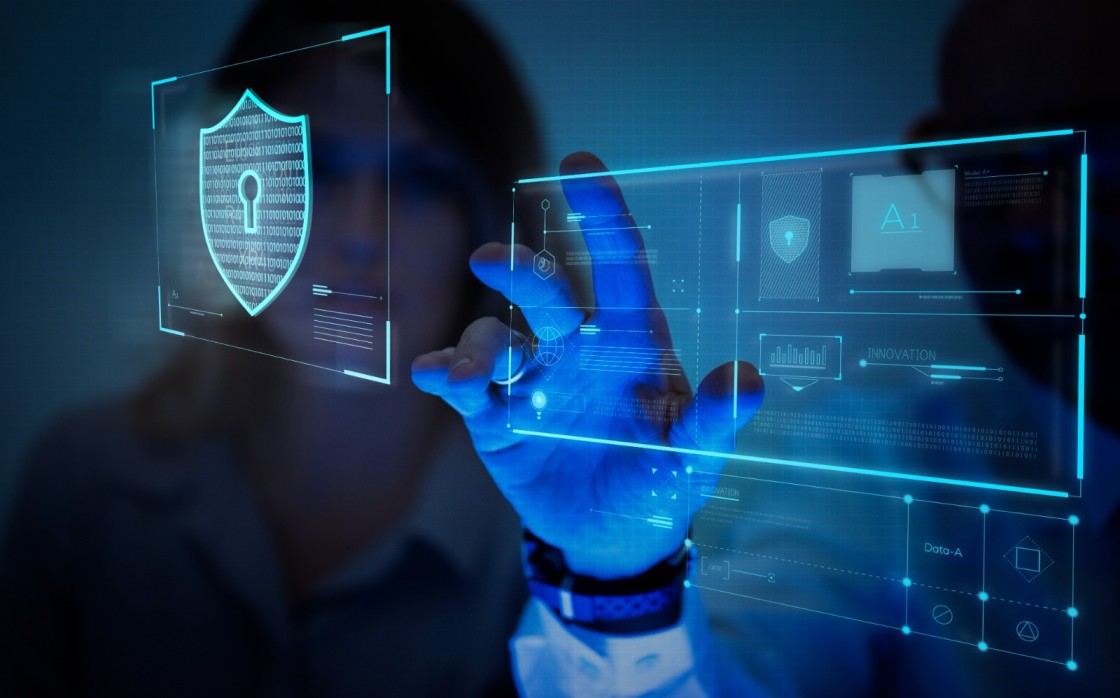
18. Quantum-resistant cryptography: As quantum computers get more powerful, standard encryption approaches may become insecure. Quantum-resistant cryptography seeks to address this issue.
19. Security Orchestration, Automation, and Response (SOAR) technologies automate routine cybersecurity processes, freeing up security staff to focus on strategic projects.
20. Cybersecurity Mesh Architecture: This distributed security paradigm is intended to protect complex IT environments with networked devices and applications.
Individuals and organizations can better defend themselves in the digital age by remaining educated and reacting to the always-shifting threat landscape.
With the cyber environment evolving into a highly integrated system, an adaptive, multilayered, and self-learning security system has become critical. Furthermore, factors such as the advent of mobile-networked devices, the popularity of electronic communications, the growth of social media, and rising reliance on Big Data have necessitated the updating of defending cybersecurity systems to reflect the changing cyber threat landscape. Governments have boosted their spending on cybersecurity solutions to protect devices and sensitive data from cyberattacks, hence boosting market development.
Advances in modern technology, such as AI in cyber security, Machine Learning (ML), big data analytics, IoT, 5G, edge computing, and cloud computing, are allowing market players to introduce new solutions based on these technologies, attract potential business clients, and diversify their revenue sources.
The continuous digitization tsunami has brought significant changes to industries such as IT, BFSI, healthcare, and manufacturing. Businesses are investing in cutting-edge technologies like 5G, IoT, AI, ML, and cloud, which are expected to offer enormous opportunities in the cybersecurity sector. The integration of Artificial intelligence (AI) and Machine learning (ML) into cybersecurity systems. These technologies improve threat detection and response capabilities by analyzing large volumes of data to uncover patterns and abnormalities that could suggest possible security breaches. Companies are taking major steps to incorporate new technologies into their security solution offerings.
The Changing Landscape of Cybersecurity: Market Factors and Innovation
The cybersecurity sector is undergoing a rapid shift, fueled by a complex interplay of commercial forces and ongoing innovation. Here's a breakdown of the primary drivers:
1. Escalating Cyber Threats: Cyberattacks are becoming more frequent and sophisticated. Businesses are often subjected to ransomware assaults, data breaches, and targeted invasions. This anxiety leads to increasing investment in cybersecurity solutions.
2. Expanding Attack Surface: Our rising reliance on interconnected gadgets, the Internet of Things (IoT), and cloud computing creates a broad and vulnerable attack surface. To defend the ever-expanding digital landscape, organizations must have comprehensive security measures.
3. Regulatory Landscape: Governments throughout the world are enforcing stronger data privacy legislation such as GDPR and CCPA. These requirements require robust cybersecurity measures, encouraging enterprises to spend in compliance.
4. Technological Advancements: The introduction of new technologies such as artificial intelligence future (AI) and machine learning (ML) creates both possibilities and obstacles. While AI may automate threat detection and response, it also presents new attack channels, necessitating novel security solutions.
1. Advanced Security Solutions: Traditional firewalls and antivirus software are no longer sufficient. The market is seeing an increase in AI-powered systems that can detect and respond to complex threats in real time.
2. Zero Trust Security: This new approach implies no human or device is fundamentally trustworthy. It requires constant verification and access control to reduce the assault. Security Orchestration, Automation, and Response (SOAR) solutions automate monotonous activities, freeing up security personnel to focus on strategic goals and incident response.
3. Cybersecurity Mesh Architecture: This dispersed security paradigm protects complex IT environments by connecting devices and applications, providing better flexibility and scalability.
While the overall cybersecurity business is expanding, there may be pockets of saturation in certain segments:
1. Security Talent: There may be an excess of cybersecurity professionals in certain areas, particularly in automation. However, the demand for highly skilled specialists continues.
2. Traditional Security Solutions: The effectiveness of traditional solutions may be plateauing as attackers develop new techniques. This causes a move toward advanced, AI-powered solutions. The market will favor sophisticated solutions that incorporate AI, automation, and an emphasis on zero-trust principles. Because of ongoing threats and regulatory demands, the demand for comprehensive cybersecurity solutions will only increase. The demand for highly qualified cybersecurity personnel with specialized skill sets remains critical. Understanding these market variables and staying up to date on developing technology allows firms and people to make informed cybersecurity decisions in this dynamic marketplace.
The scope of cybersecurity professions is large and ever-changing, providing a wide range of opportunities for professionals with various skill sets. Here's an overview of the various topics and specializations you can pursue:
1. Security analysts are responsible for identifying vulnerabilities, analyzing threats, and implementing security measures. Security engineers plan, build, and manage security infrastructure.
2. Network Security Engineers: Their primary responsibility is to secure computer networks and network devices.
3. Cloud Security Engineers specialize in protecting cloud-based settings and data. Application security engineers ensure the security of programs and software.
4. Security Architects are responsible for designing and overseeing an organization's comprehensive security architecture.
5. Ethical hackers identify system weaknesses through simulated attacks.
6. Incident Responders: Manage security issues, including investigation, containment, and recovery.
1. The Chief Information Security Officer (CISO) leads and oversees the organization's overall cybersecurity strategy.
2. Security Manager: Leads a team of security specialists and manages specific security initiatives.
3. Compliance and Audit:Security auditors conduct security evaluations and guarantee compliance with requirements. Security Compliance Specialists assist enterprises in achieving and maintaining compliance with security requirements.
1. Security Automation Specialists: Create and deploy automated security solutions utilizing tools such as SOAR platforms.
2. Cyber Threat Intelligence Analysts: Gather and evaluate threat intelligence to predict and prevent cyberattacks.
3. Cloud Security Architects: Create and protect cloud-based infrastructure using cloud-native security solutions.
4. Security Mesh Architects: Create and maintain cybersecurity mesh architectures in complex IT environments.
1. Industry: Cybersecurity requirements vary by industry. The finance, healthcare, and government industries frequently have significant cybersecurity expectations.
2. Company Size: Larger enterprises typically have more specialized cybersecurity responsibilities than smaller ones.
3. Skillset: The precise skills you learn will influence the types of cybersecurity jobs you are eligible for.
However, the job market in cybersecurity is diverse and provides excellent career prospects for those with a passion for technology and security. With the ever-changing threat landscape, the demand for qualified cybersecurity workers is projected to rise dramatically in the coming years.
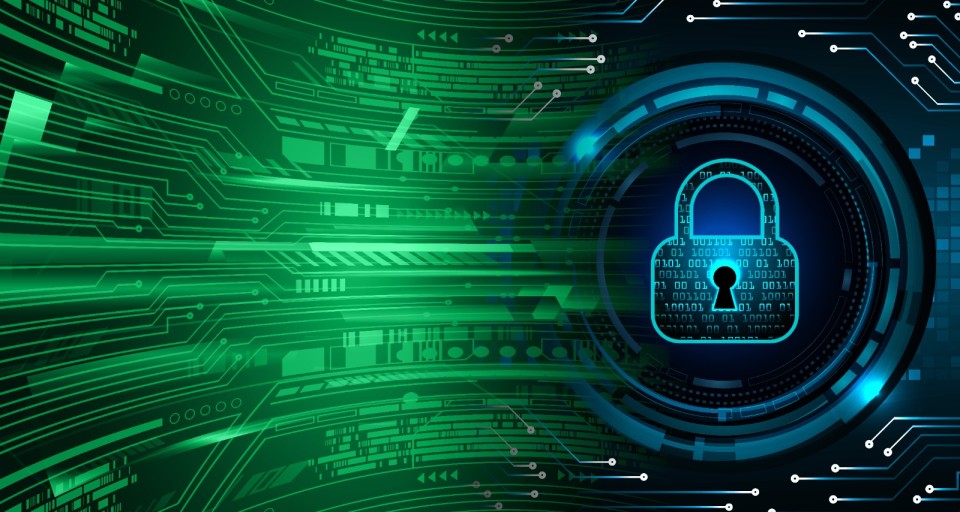
With fast-expanding and rising cyber technologies such as Artificial Intelligence and the Internet of Things (IoT), human connection with the digital world has become ubiquitous. Simultaneously, hackers seek new and sophisticated ways to exploit weaknesses, while malevolent cyber actors aim to advance from low-level attacks to high-profile attacks on key infrastructure, financial systems, and government organizations.
As nations around the world grapple with an alarming increase in cyber threats, which puts major difficulties on people, organizations, and governments alike, governments must prioritize cybersecurity measures and collaborate with businesses and academic circles through national and worldwide initiatives to address the increasing cyber threat.
The IT Act, together with its allied Rules, is the fundamental law dealing with the various aspects of how to approach issues of electronic records and papers, digital signatures, cybercrime on information and systems, and so on. The Act also specified the crimes and sanctions. Over time, the changing technological landscape resulted in an update to this Act, known as the IT Update Act. This expanded the scope of cybercrime and imposed fines for data breaches, identity theft, and online harassment.
According to the IT Act, the Computer Emergency Response Team - India (CERT-In) offers guidelines for monitoring, identifying, preventing, and mitigating cybersecurity events. According to this, service providers, intermediaries, data centers, corporations, and government organizations are obligated to take specific actions or provide information for cyber Incident responses, as well as for protective and preventive measures against cyber Incidents.
The Indian government has several programs and policies in place to address cybersecurity problems. Some important points are highlighted below.
1. The IT Act 2000, an act to provide legal representation of transactions carried out by any means of electronic communication, sets up legal foundations for data protection, cybercrime, and electronic transactions.
2. Information Technology (Amendment) Act of 2008: This modification reinforced the IT Act by including protections for data privacy and cyber security breaches.
3. Digital Personal Data Protection Act of 2023 (DPDP): This recently passed statute intends to govern businesses' acquisition, storage, use, and transfer of personal data.
Government agencies
1. Indian Computer Emergency Response Team (CERT-In): This government entity is in charge of cybersecurity threats, vulnerabilities, and incidents. It also organizes reactions to cyberattacks.
2. National Vital Information Infrastructure Protection Centre (NCIIPC): This institution is responsible for protecting India's vital information infrastructure against cyber threats.
Initiatives
1. Cyber Surakshit Bharat: This project seeks to raise awareness about cybercrime and encourage cybersecurity best practices among individuals and enterprises.
2. National Cyber Security Policy (2013): This policy establishes a foundation for building a secure cyber ecosystem in India. Its primary objectives are to protect critical infrastructure, establish a security culture, and promote international cooperation.
The Ministry of Electronics and Information Technology (MeitY) established Cyber Surakshit Bharat, an effort aimed at strengthening India's cybersecurity ecosystem in keeping with the vision of a secure "Digital India." It collaborates with the National Electronic Governance Division (NeGD) to implement a holistic approach.
National Cybersecurity Policy (2013): This policy statement provides a foundation for securing India's cyberspace. Its primary goals are to ensure a safe infrastructure, promote a security culture, develop cyber threat prevention skills, and construct a legal and institutional framework for a secure cyberspace.
The Indian Computer Emergency Response Team (CERT-In) was established by MeitY and serves as the national nodal entity for cyber security concerns. It serves as the government's operational arm for cyber security, managing cyber security issues and issuing advisories.
MeitY also runs the Cyber Swachhta Kendra, commonly known as the Botnet Cleaning and Malware Analysis Centre. It is consistent with the National Cyber Security Policy and attempts to identify and eliminate botnet infestations in India. It tries to make the internet a safer place by collaborating with antivirus vendors and internet service providers.
These are only a handful of the main programs that the Indian government has developed to combat cybersecurity issues. These projects work together to strengthen national cyber defenses and promote a safer digital environment. Talent Pool India has a high number of competent IT workers. This expertise, combined with government efforts to promote cyber security education, results in a robust workforce for cyber security enterprises.
Cost Advantages
When compared to certain developed countries, India has a lower cost of talent and operations. This could appeal to multinational cybersecurity organizations eager to expand.
Growing Digital Landscape
India's fast digitization generates a sizable local market for cyber security solutions. This drives innovation and growth in the Indian cybersecurity industry.
Examples of India's Growth as a Hub:
1. Global security centers are shifting to India, taking advantage of skilled labor and economic benefits.
2. State governments are investing in cybersecurity infrastructure. For example, Maharashtra collaborated with a technology company to create a cyber security and digital threat analytics center.
3. Global Security Centers Set Up Shop: Multinational corporations are taking note of India's qualified manpower and cost benefits. They are constructing security centers in India to capitalize on this talent pool and supply cybersecurity services worldwide. For example, a well-known cyber security firm has established a security operations center in Bengaluru to serve clients worldwide.
4. State Governments Investing in Security Infrastructure: Recognizing the importance of cybersecurity, certain Indian states are taking proactive steps. For example, Maharashtra collaborated with a renowned technology company to create a cyber security and digital threat analytics center. This center will identify and mitigate cyber threats to the state's key infrastructure and industries. With continued growth in the sector, we can expect to see more evidence of India's position as a cyber security hub.
While India has the potential to be a significant cyber security powerhouse, it faces various challenges:
1. Infrastructure Development:
Lagging Infrastructure: Despite India's enormous IT talent pool, the supporting infrastructure may still be in its early stages. This could include a lack of advanced testing and training facilities, as well as limits in nationwide high-speed internet connectivity. To meet the demands of a global center, major infrastructure upgrades may be required.
2. Workforce Development:
While India has a huge IT workforce, there may be a skills gap between available personnel and the specific skillsets required for high-level cyber security employment. This may involve a shortage of experts with experience in areas such as offensive security, threat intelligence, or secure coding.
3. Legal and Regulatory Landscape:
1.Outdated laws: Cyber threats and illegal activity change frequently. Existing cyber security laws may not be comprehensive enough to meet emerging dangers or provide a clear framework for investigation and prosecution. Regularly updating this legislation is critical.
2. Data Privacy Concerns: As India's digital footprint grows, data privacy becomes increasingly important. Striking a balance between national security demands and individual privacy rights through well-defined legislation is critical for building confidence and attracting international business.
4. Other challenges:
Cybercrime understanding: The public's understanding of cyber security concerns and effective practices is frequently low. This makes individuals and organizations more vulnerable to cyberattacks.
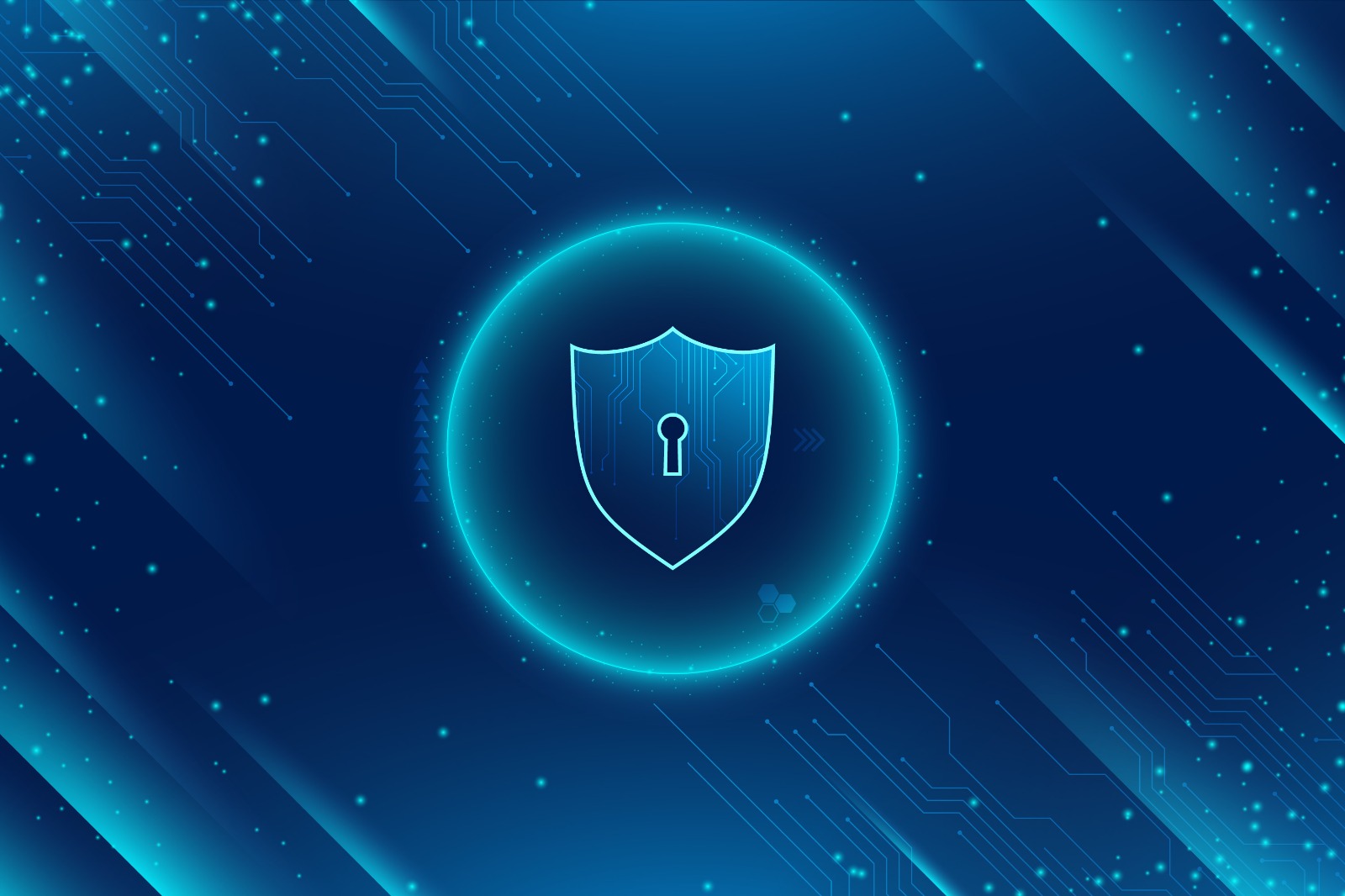
By tackling these difficulties, India may strengthen its position as a major cyber security hub. Here are a few potential solutions:
1. Continued government investments in infrastructure development.
2. Collaboration of government and business to build specialized cyber security education programs.
3. Laws and regulations governing cyber security are often updated.
4. Public awareness initiatives to educate the public about cybersecurity threats and best practices.
Overcoming these issues would necessitate a multifaceted approach, but India has the potential to be a major player in the global cybersecurity environment.
Building a proactive cyber security and detection capability is challenging for countries. As cyber-attacks become more complex, states require cybersecurity that not only protects today but also provides proactive defense against emerging and future risks, allowing them to respond decisively to new challenges.
A parallel spike in cyber dangers has become increasingly concerning as India's internet. Cybercrimes are growing increasingly sophisticated as digital technology advances.
India must therefore thoroughly examine its cyberspace vulnerabilities and address them holistically via a more comprehensive Cyber-Security Policy.
Are you seeking the top cyber security courses in India?
You're in the correct place! The Cyber Security Institute in India is the top location for individuals seeking a comprehensive education in cybersecurity. The Cyber Security Institute provides the best cybersecurity course in India, offering courses ranging from basic to expert levels.
The Cyber Security training in India offers great education and certification courses to help you build the skills and knowledge needed to be a successful cybersecurity expert. All courses are taught by industry experts with extensive experience in the field, guaranteeing you have the most current information on cybersecurity challenges.
Choosing the best cybersecurity training in India might be important to your career growth. So, here are some briefs to help you out with the dilemma of right course selection.
1. Define Your Career Goals
Cybersecurity is a wide field. Would you like to be a penetration tester, security analyst, ethical hacker, or something else? Investigate various specializations and their career routes. Before choosing any course, it is advised to know your goal first.
2. Consider your learning style
Do you prefer instructor-led classes or the convenience of online courses?
Consider what pace and organization works best for you. Many suppliers offer a combination of online and physical services.
3. Research the Course Content and Curriculum
Ensure that the course addresses the most recent cybersecurity trends and technology relevant to your chosen specialization. Look for courses that combine theory and application, such as hands-on laboratories and projects.
4. Evaluate the trainer's credentials and experience
Choose a course with instructors who have industry experience and a good technical background. Certifications can be useful indicators, but practical experience is as crucial.
5. Verify Course Recognition and Certifications
Some courses may prepare you to get industry-recognized certifications such as CEH, CompTIA Security+, or CISSP. These certificates can help improve your résumé and professional chances.
6. Look for Placement Assistance
Does the institute provide career advising and job placement assistance? This might be especially useful for newcomers to the cybersecurity employment market.
7. Consider Course Fees and ROI
The cost of cybersecurity courses varies greatly. Determine the ROI by evaluating the course content, trainer expertise, and prospective career rewards.
8. Look for Practical Labs and Simulations
Don't only learn theory. Check that the course provides comprehensive hands-on learning through labs and simulations that reflect real-world security scenarios. This will allow you to build practical skills and apply your knowledge in a safe setting.
9. Inquire about the course materials and evaluate their quality
High-quality courses will include detailed study aids, access to internet resources, and current information that reflects industry trends and dangers.
10. Consider Mentorship Opportunities
Some institutes provide mentorship programs that match you with experienced cybersecurity professionals. This can provide vital support throughout your study experience and beyond.
11. Consider Industry Recognition
While certifications are not the only indicator, consider courses that are aligned with established cybersecurity credentials. This displays your adherence to industry standards.
12. Consider Free introduction Courses
Many institutes provide free introduction modules or pre-recorded courses. This allows you to test the course content, teaching style, and platform before enrolling.
13. Consider your schedule when looking for flexible learning options
Look for courses that offer flexible learning choices such as part-time schedules, online delivery, or self-paced study to help you balance your career and family life.
14. Evaluate Assessment Methods
Inquire about how the course will evaluate your learning. A combination of examinations, projects, and practical exams can provide a thorough assessment of your knowledge and abilities.
15. Investigate Scholarship Opportunities
Look into scholarship opportunities provided by institutes, government bodies, or business associations. This can greatly lower your financial load.
16. Look for Alumni Network Connections
A robust alumni network might be a great resource. Determine whether the institute has an active alumni network that can offer professional guidance, mentorship, or even job chances.
17. Read student reviews and testimonials
Don't underestimate the value of student reviews. Seek real comments from previous students to gain insight into the course quality, instructor effectiveness, and overall learning experience.
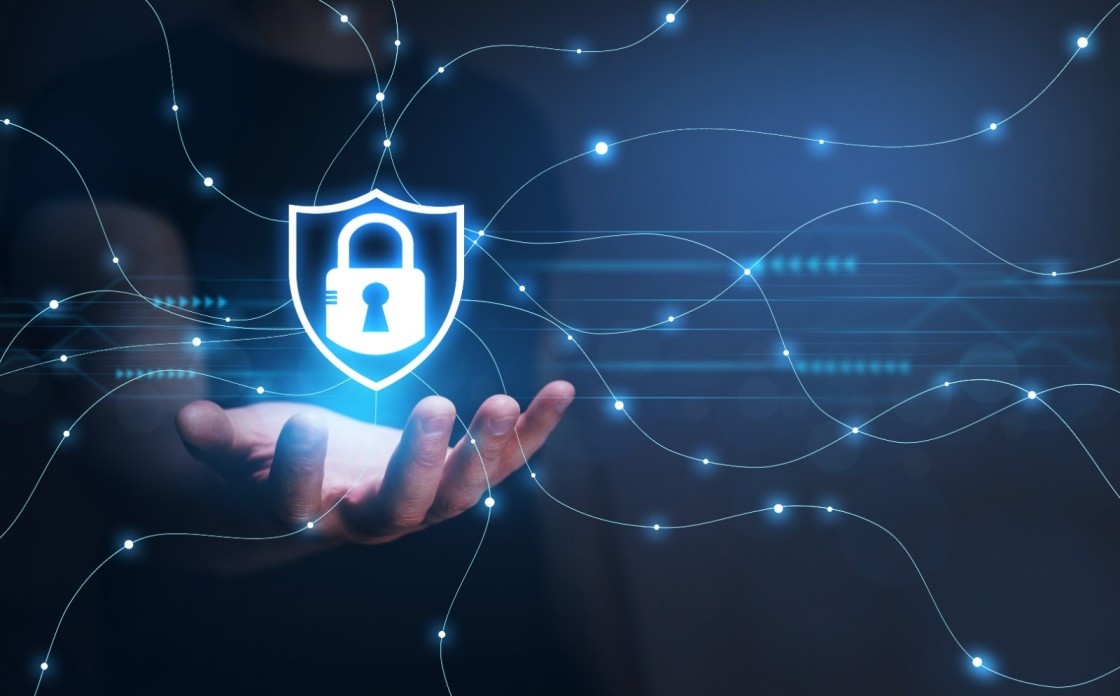
Following these recommendations will allow you to make a better-informed selection when selecting a cybersecurity course in India. Remember, a well-rounded course that blends theoretical understanding, hands-on experience, and industry applicability will prepare you for a successful career in cybersecurity.
Imagine the internet and all of our linked devices are like a massive open door to our home. Anyone could stroll in, steal what they wanted, mess with their belongings, and leave a huge mess behind. This is similar to what would occur in the absence of cybersecurity.
1. Chaos at the bank: Hackers might easily take money from your bank account or even disrupt the bank's systems, resulting in a massive financial mess.
2. Identity theft abounds: Personal information such as addresses, passwords, and even medical records would be available, allowing criminals to easily steal your identity. Viruses and other harmful software would go wild, infecting computers and causing them to fail, bringing down critical systems such as power grids and hospitals.
3. Shopping nightmare: Online shopping would be extremely unsafe. Hackers could steal your credit card information or disrupt online retailers, making it impossible to verify if what you're purchasing is legitimate.
4. Identity Theft: Imagine how easy it would be to steal your personal information, such as credit card numbers, passwords, and even medical records. This would be a dream come true for identity thieves, who might devastate your financial situation and reputation.
5. Banking Bonanza for Hackers: Banks would be like pinatas filled with cash, just waiting for a hacker to break them open. Our hard-earned money would be unsafe, and online banking might become a perilous business.
6. Tech Terrors: Viruses and malware would proliferate, infecting computers and causing them to crash as frequently as a rusted swing set. Critical infrastructure such as electrical grids and hospitals might be disrupted, causing disruptions in daily life.
7. Increased Cyber Attacks: Without cybersecurity, hackers might easily exploit system weaknesses, resulting in a huge increase in cyber attacks such as malware, ransomware, phishing, and hacking.
8. Data Breach: Personal, financial, and sensitive information would be more vulnerable to compromise, resulting in frequent data breaches. This might result in identity theft, financial loss, and adverse publicity for individuals and corporations.
9. Disruption of Services: Cyber assaults may disrupt key services such as banking, healthcare, transportation, and utilities, causing chaos and annoyance in people's lives.
10. Loss of Intellectual Property: Companies would struggle to safeguard their intellectual property (IP) from theft, resulting in decreased innovation, competitiveness, and revenue.
11. Impact on National Security: Nations would face increasing dangers to their national security, including potential attacks on government systems, infrastructure, and sensitive data.
12. Privacy Concerns: A lack of cybersecurity would degrade people's privacy by making their online activities and personal information more vulnerable to surveillance and exploitation.
13. Economic consequences: Cyber assaults and data breaches would result in considerable financial losses, employment layoffs, and decreasing customer faith in digital services.
14. Legal and regulatory issues: The lack of cybersecurity measures would provide legal and regulatory concerns, as there would be no structure to handle cybercrime and defend individual rights.
Therefore, the absence of cybersecurity would result in a more dangerous and uncertain digital environment, affecting individuals, corporations, and governments equally.
Artificial intelligence (AI) enables robots to execute tasks that would normally need human intelligence, such as decision-making, speech recognition, visual perception, and language translation. AI uses training data to understand the context and decide how to behave or react in various situations.
Artificial intelligence in cybersecurity is becoming increasingly important in protecting online systems from cybercriminals' attacks and unwanted access attempts. AI systems, when properly taught, can detect cyber threats automatically, create alerts, identify new strands of malware, and secure important company data.
Deep learning, machine learning (ML), knowledge representation and logic, and natural language processing are all examples of AI technologies that can be utilized to increase cybersecurity automation and intelligence.
Is using AI safe for Cyber Security?
When properly applied, AI for cybersecurity may be both safe and effective. AI technology can help improve cybersecurity by spotting patterns and abnormalities in data, automating routine operations, and responding to threats in real time. However, there are hazards involved with AI in cybersecurity, including the possibility of cybercriminals influencing or exploiting AI systems.
To ensure the safe usage of AI in cybersecurity, it is critical to
1. Implement Strong Security Measures: To prevent unwanted access or manipulation of AI systems, use encryption, access limits, and other security measures.
2. Regularly Update and Patch: Keep AI systems and software up to current with the most recent security patches to guard against known vulnerabilities.
3. Use Trusted AI Solutions: Select AI solutions from recognized providers and check their security credentials.
4. Monitor and Audit AI Systems: Continuously monitor AI systems for strange activity and conduct audits to ensure they are working properly.
5. Train Staff: Provide cybersecurity training to employees to help them understand the risks of AI and how to utilize it properly.
How can AI prevent cybersecurity attacks?
AI can Prevent cybersecurity attacks in a variety of ways:
1. Threat detection: Artificial intelligence (AI) can scan massive amounts of data to identify trends and abnormalities that may suggest a cyber assault. This allows firms to recognize and respond to risks more quickly.
2. Behavioural Analysis: Artificial intelligence can monitor user and system behavior to detect odd or suspicious conduct. This can assist in identifying insider threats and other sophisticated attacks.
3. Malware Detection: AI can examine files and network traffic to detect malware. AI-powered antivirus solutions can detect and prevent both known and undiscovered threats.
4. Predictive Analytics: AI can use past data and machine learning algorithms to forecast future cyber threats. This can assist firms in proactively defending against emerging threats.
5. Predictive Analytics: AI can use past data and machine learning algorithms to forecast future cyber threats. This can assist firms in proactively defending against emerging threats.
6. Automated Response: Artificial intelligence can automate cyber attack responses such as isolating affected systems, blocking malicious traffic, and updating security rules.
7. Vulnerability Management: Artificial intelligence can help detect and prioritize security vulnerabilities in systems and applications, allowing firms to patch them before they are exploited.
However, the scope of artificial intelligence is davastingly increasing as well as offering real-time threat detection, automated response, and predictive analytics, allowing enterprises to defend against a wide spectrum of cyber attacks.
Applications of AI in Cybersecurity
AI is used in cybersecurity in a variety of applications to improve security measures and protect against cyber threats. Some significant applications of AI in cybersecurity are:
1. Threat detection and intelligence: AI systems can sift through massive volumes of data to identify trends and abnormalities that may suggest a cyber attack. This encompasses both known and emergent threats.
2. Behavioral Analysis: Artificial intelligence can analyze user and system behavior to detect deviations from regular patterns, which could indicate a security breach or insider threat.
3. Malware Detection: AI-powered antivirus software can scan files and network traffic to detect and prevent malware, such as zero-day assaults and other previously undiscovered dangers.
4. Automated Response: AI can automate cyber attack responses such as isolating compromised computers, blocking malicious traffic, and real-time security policy updates.
5. Vulnerability Management: Artificial intelligence can help detect and prioritize security vulnerabilities in systems and applications, allowing firms to patch them before they are exploited.
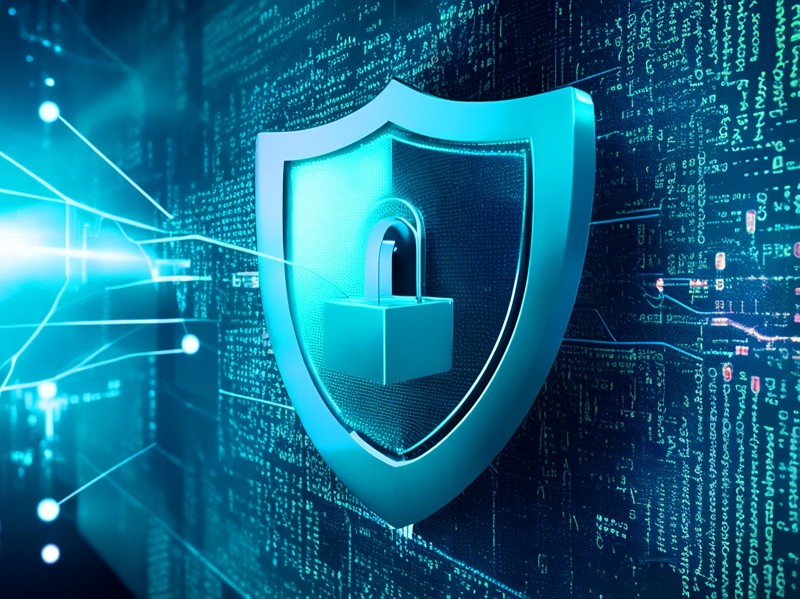
6. Security analytics: Artificial intelligence (AI) can analyze security logs and data from many sources to provide insights into security incidents and patterns, assisting organizations in improving their overall security posture.
7. User Authentication: Artificial intelligence can improve user authentication processes by evaluating behavioral biometrics such as typing patterns and mouse movements to confirm users' identities.
8. Phishing Detection: Artificial intelligence can help detect phishing attempts by studying email content and user behavior to identify questionable communications.
Consequently, AI improves cybersecurity by enabling increased threat detection, automated response capabilities, and improved security analytics.
Cybersecurity in national sectors is crucial since a strong attack on an important sector can have devastating effects on a country's economy, national security, and public safety. Critical sectors include:
1. Power grids
2. Financial systems
3. Telecommunications networks
4. Transport systems
5. Healthcare systems
6. Government Services
These industries are all becoming more reliant on digital technology, making them vulnerable to cyberattacks.
There are various steps that governments and businesses can take to improve cybersecurity in national industries. This includes:
1. Creating and implementing cybersecurity strategies and frameworks.
2. Identifying and Assessing Cyber Risks
3. Implementing security controls
4. Educating and training staff
5. Sharing information on cyber risks.
6. Working with international partners
By adopting these precautions, governments and businesses can help defend important sectors from cyberattacks. To delve into a detailed knowledge of cybersecurity, must check the Cybersecurity course in Delhi.
Here are some other benefits of improving cybersecurity in national sectors:
1. Protects essential infrastructure from disruptions.
2. Lower the danger of financial loss.
3. Protects sensitive data.
4. Maintains public trust.
5. Ensures continuity of key services.
1. Denial-of-Service (DoS): An attacker floods a network with congestion, rendering it unavailable for authorized users. (For example, shutting off a power grid's control system).
2. Ransomware occurs when attackers encrypt data and demand a ransom to decrypt it. (For example, hospitals are unable to access patient records).
3. Supply Chain Attacks: Attackers exploit a trusted vendor to get access to a larger network. (Example: malicious code implanted in software used by many government entities).
4. Espionage: Hackers steal sensitive information for commercial gain or national security. (For example, targeting intellectual property from research institutions).
1. Legacy Systems: Many vital infrastructures rely on out-of-date systems with known vulnerabilities.
2. Skilled Workforce Shortage: There aren't enough cybersecurity professionals to handle complex systems and respond to threats.
3. Interconnectedness: The reliance on interconnected systems produces a domino effect in which a single breach can spread across sectors.
4. Evolving Threats: Cybercriminals are continually developing new ways, making it difficult to keep up with them.
1. Standardization and Regulation: Governments can develop cybersecurity frameworks and legislation to maintain basic security standards across industries.
2. Information Sharing: Fostering collaboration among government agencies, commercial organizations, and foreign partners enables the sharing of threat intelligence and best practices.
3. Public-Private Partnerships: Collaboration enables the use of both sectors' resources and experience to provide a more comprehensive defense.
4. Investing in R&D means funding research to develop novel technologies and tactics to combat emerging risks.
1. Enhanced National Security: Protects vital infrastructure from disturbance, impeding prospective attackers.
2. Economic Stability: Reduces financial losses from cyberattacks, ensuring long-term economic prosperity.
3. Public safety safeguards important services such as healthcare and emergency response, ensuring residents' well-being.
4. Global competitiveness: A good cybersecurity reputation builds confidence and attracts global investment.
1. The National Institute of Standards and Technology (NIST) Cybersecurity Framework (US) offers a road map for enterprises to strengthen their cybersecurity.
2. The Australian Cyber Security Centre (ACSC) advises and assists organizations and people on cybersecurity best practices.
3. The Indian Cyber Crime Coordination Centre (I4C) handles cybercrime investigation and response actions throughout India.
Countries may create a more resilient and secure cyberspace for their important industries by implementing these policies and encouraging international cooperation.
1. Large-Scale Digitization of Public Services:
1. Prioritize security in the early phases of design for all digitization activities.
2. Developing institutional capabilities for assessment, evaluation, certification, and rating of key devices.
3. Timely notification of vulnerabilities and occurrences.
2. Supply Chain Security:
1. Monitoring and mapping the supply chain for integrated circuits (ICT) and electronic devices.
2. We are using the country's semiconductor design strengths on a worldwide scale at the strategic, tactical, and technical levels.
3. Critical Infrastructure Protection:
1. Integrating Supervisory Control And Data Acquisition (SCADA) Security.
2. Keeping a record of vulnerabilities.
3. Preparing an aggregate security baseline for the sector and tracking its controls.
4. They're creating audit guidelines for threat readiness and establishing cyber-insurance products.
4. Digital Payments: Mapping and modeling deployed devices and platforms, supply chain, transacting entities, payment flows, interfaces, and data sharing.
5. State-level cyber security involves developing policies, allocating specific funds, scrutinizing digitization plans, and establishing guidelines for security architecture, operations, and governance.
6. Security of Small and Medium Businesses:
1. Policy intervention in cybersecurity that provides incentives for increased cybersecurity preparation.
2. Developing security standards, frameworks, and architectures to enable the Internet of Things (IoT) and industrialization.
How is Cyber Security implemented in National Organisations?
Implementing cybersecurity in a national organization entails several crucial processes and considerations to secure the safety of sensitive information and vital infrastructure.
Here's an overview of how this could be approached:
1. Risk Assessment: Begin by thoroughly assessing the organization's cybersecurity risks. Determine potential vulnerabilities and threats that may affect the organization's operations.
2. Policies and processes: Develop and implement cybersecurity policies and processes that are in line with best practices and regulatory standards. These should contain policies for data security, access control, incident response, and employee training.
3. To avoid unwanted access and cyberattacks, use robust network security measures such as firewalls, intrusion detection systems, and secure Wi-Fi networks.
4. Endpoint Security: Check that all endpoints, such as computers, mobile devices, and servers, are secure. This may include the use of antivirus software, encryption, and frequent security upgrades.
5. Implement data security measures, such as encryption and regular backups, to protect sensitive information from theft or loss.
6. Incident Response: Create and implement a plan for swiftly responding to and mitigating cybersecurity issues. This should contain protocols for reporting incidents, evaluating their consequences, and recovering from them.
7. Employee Training: Provide frequent cybersecurity training to employees to increase their awareness of cybersecurity threats and best practices. Employees should be trained to spot and respond to phishing attacks, for example.
8. Third-party risk management involves assessing the cybersecurity procedures of third-party vendors and partners who have access to the organization's systems or data. Ensure they adhere to the same rigorous security requirements.
9. Continuous Monitoring and Improvement: Regularly assess the organization's cybersecurity posture and make modifications as needed. This could include completing regular security audits and penetration testing.
10. Compliance: Depending on the organization's location and industry, ensure compliance with applicable cybersecurity legislation and standards such as the GDPR, HIPAA, or NIST Cybersecurity Framework.
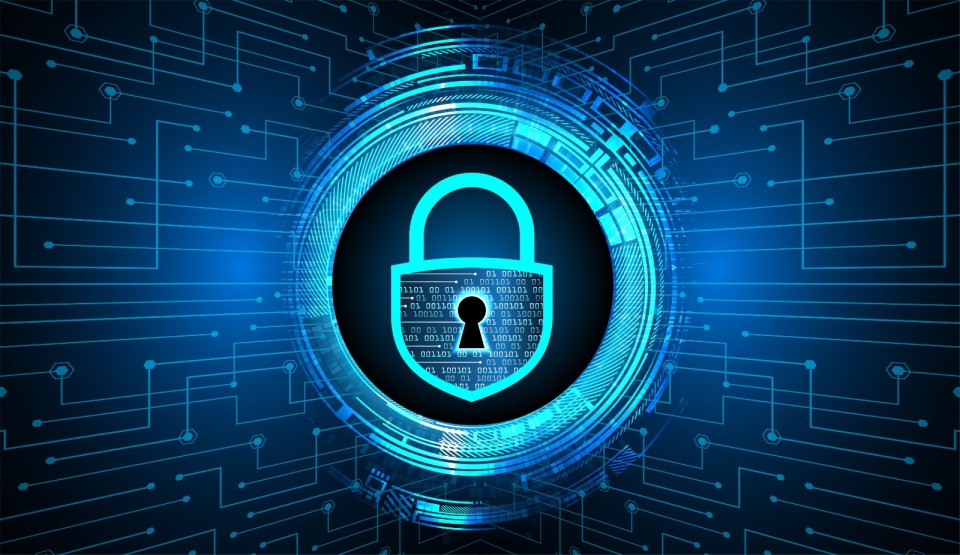
Implementing cybersecurity in a national company is a continuous effort requiring a thorough and proactive approach. Staying up-to-date on the newest cybersecurity trends and threats, as well as regularly assessing and improving your organization's security, is critical.
In the corporate sector, cyber security assets extend beyond firewalls and antivirus software. It is a comprehensive shield that safeguards a company's digital crown jewels.
Here's an in-depth look at these assets:
Traditional assets:
1. Hardware refers to physical devices such as desktops, laptops, servers, routers, and network equipment. It is critical to protect these devices with strong passwords, encryption, and the most recent firmware updates.
2. Software refers to all applications, operating systems, and databases used by the company. Patch management, vulnerability scanning, and access controls are critical to software security.
3. Networks: Any links to the internet or cloud services, as well as the company's internal network, require protection. Firewalls, intrusion detection systems, and network segmentation can all help to prevent illegal access and movement within the network.
Evolving Assets:
1. Cloud Resources: Many businesses use cloud platforms for storage, processing, and applications. Security considerations apply to these cloud settings as well, including effective access controls and data encryption.
2. Internet of Things (IoT): The growing number of connected devices, such as sensors and smart gadgets, may pose new threats. These assets must be inventoried, safeguarded, and monitored for potential exploits.
3. Digital Identities: Attackers target user accounts and access credentials. Multi-factor authentication, strong password restrictions, and privileged access management are critical to safeguarding these digital identities.
Intangible assets:
1. Data: Most businesses rely heavily on data, which includes everything from customer information to financial records and intellectual property. Data encryption, access controls, and data loss prevention procedures protect this valuable asset.
2. Company Processes: Cyberattacks can disrupt critical company processes, resulting in financial losses and operational delays. Implementing security safeguards in workflows and disaster recovery plans helps to reduce these risks.
3. Brand Reputation: A successful hack can significantly harm a company's reputation. Proactive cybersecurity measures show a commitment to preserving customer data and privacy, which fosters confidence.
Human Assets:
1. Employees: Individuals are frequently the weakest link in the security chain. Employees who receive security awareness training are more equipped to spot phishing efforts, social engineering strategies, and other cyber risks.
Importance of Asset Management
Cybersecurity Asset Management is a key component of cybersecurity. This entails regularly identifying, categorizing, and monitoring all of these assets.
This full grasp of a company's digital world enables:
1. Prioritization: Concentrate security efforts on the most important assets, according to their value and vulnerability.
2. Risk Mitigation: Identify and close security weaknesses in specific assets before they are exploited.
3. Maintain compliance with all applicable data privacy rules and industry standards.
4. Incident Response: Effectively respond to cyberattacks by immediately identifying compromised assets and taking corrective action.
By efficiently managing these various assets, businesses can establish a strong cybersecurity posture, protecting their precious data, systems, and reputation in an ever-changing threat scenario.
How cybersecurity experts contribute to the corporate world
1. Protection: Instead of merely discussing firewalls, look into the many security solutions they use, such as intrusion detection/prevention systems (IDS/IPS), data loss prevention (DLP), and endpoint security.
2. Preparation: Describe how vulnerability assessments and penetration tests work. Briefly describe many sorts of security testing procedures.
3. Detection and Response: Discuss how they monitor networks. This could include SIEM tools and threat intelligence feeds.
4. Compliance: Provide instances of applicable data privacy rules (such as GDPR and HIPAA) and how cybersecurity professionals maintain compliance.
5. Education: Discuss several sorts of security awareness training programs (such as phishing simulators and security best practices training).
Suppose you want to shape your networking skills and get hands-on experience in live corporate projects. In that case, GICESEH has brought a one-stop solution for all cybersecurity courses that contribute to the corporate world.
Additional contributions:
1. Security Architecture: Cybersecurity experts create and implement secure IT systems and network architectures.
2. Incident Management: They create and manage the company's incident response plan in the event of a cyberattack. This includes mitigating the damage, restoring systems, and learning from the experience.
3. Security Governance: They contribute to the development of security policies and procedures to guarantee that everyone in the organization understands their cybersecurity obligations.
4. Staying Updated: The cybersecurity threat landscape is continuously changing. Cybersecurity professionals stay up to date on the latest threats and vulnerabilities to strengthen the company's defenses.
Cyber security is essential in education because it protects valuable assets and fosters a safe digital learning environment. Here's a breakdown of its significance.
1. Protecting educational assets:
1. Student and Staff Data: Schools save a lot of sensitive information, such as student records, grades, financial aid information, and personnel data. Cyberattacks may harm this data, resulting in identity theft, invasions of privacy, and brand damage for the institution.
2. Educational tools: Schools make significant investments in educational technology and digital learning tools. Cyberattacks can disrupt access to these materials, stymieing the learning process.
3. School Infrastructure: Educational institutions rely on IT infrastructure for operations, communication, and administration. Cyberattacks can disable these systems, resulting in disruptions and financial losses.
2. Creating a safe digital learning environment:
1. Cyberbullying Prevention: Cybersecurity measures can help to prevent cyberbullying by encouraging responsible online activity and offering reporting methods for kids.
2. Protecting Students from Online Predators: Educational institutions are responsible for ensuring that students are safe online. Cybersecurity measures, including filtering software and online safety training, can help to limit these threats.
3. Protecting Student Privacy: Schools must safeguard student privacy online. Cybersecurity standards ensure proper data handling and compliance with applicable privacy regulations such as FERPA.
3. Promoting digital citizenship:
1. Cybersecurity Awareness: Educating students, faculty, and staff on cyber risks, safe online activities, and responsible digital citizenship is critical.
2. Building a Culture of Security: Schools may build a culture of security by developing robust cybersecurity policies and procedures, ensuring that everyone understands their responsibility in protecting digital assets.
4. Additional Benefits:
1. Reduced Costs: Resolving cybersecurity breaches can be costly. Proactive steps can help to avoid costly incidents.
2. Improved Trust: Strong cybersecurity displays a commitment to protecting student and staff data, which builds trust with parents and the community.
3. Enhanced Learning: A secure learning environment helps students to concentrate on their academics without fear of cyber attacks.
Overall, a strong cybersecurity posture is critical for educational institutions to protect sensitive data, foster a safe learning environment, and prepare students for responsible digital citizenship in an ever-changing online world.
Cyber Threats to Education:
1. Phishing Attacks: These emails or messages attempt to deceive students or staff into disclosing personal information or clicking malicious links that can install malware or steal data.
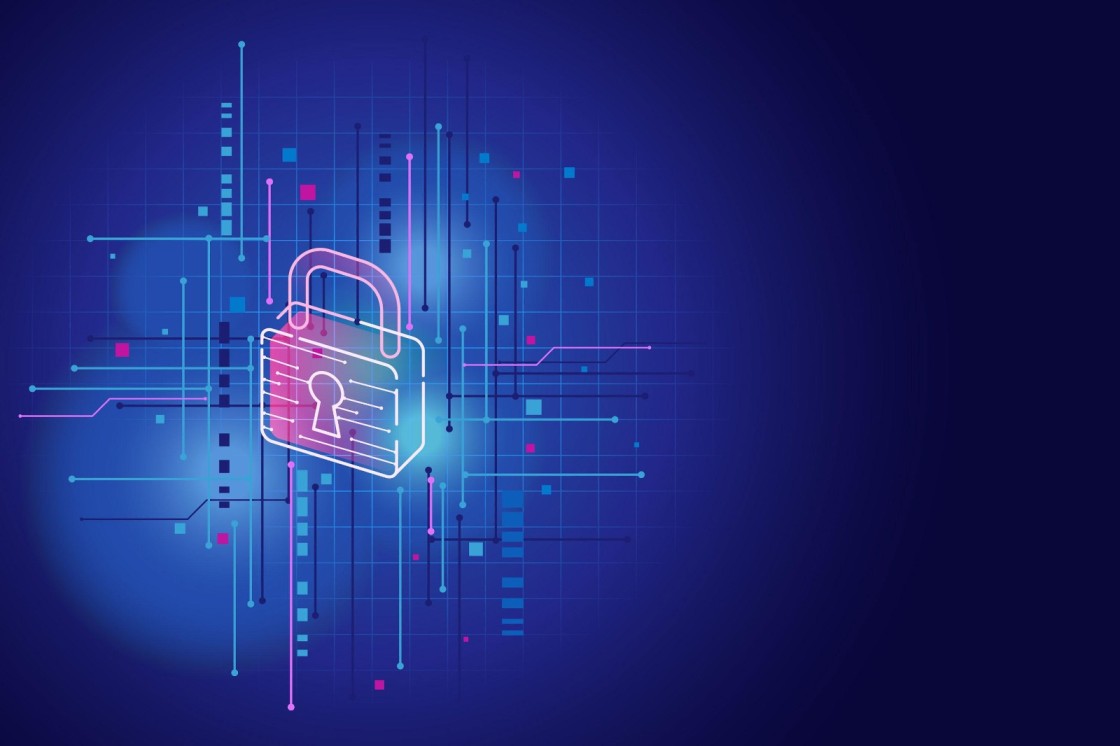
2. Ransomware Attacks: Cybercriminals might encrypt school systems or student data and demand a payment for its release. This can disrupt operations and lead to serious data loss.
3. Data breaches occur when hackers get illegal access to student records, financial data, or employee information. This can result in identity theft and other severe repercussions.
4. Denial-of-service (DoS) attacks can overwhelm school networks with traffic, rendering them inaccessible to legitimate users. This may interrupt online learning, administrative tasks, and communication.
5. Social engineering: Cybercriminals may leverage social media or manipulate trust to obtain access to educational systems.
1. Security Awareness Training: Regular training sessions for students, staff, and professors can teach them about cybersecurity best practices, phishing schemes, and how to detect suspicious activity.
2. Multi-Factor Authentication (MFA): Using MFA adds an extra degree of security beyond passwords by requiring a secondary verification step (for example, a code from a phone app) to access accounts.
3. Data Encryption: Sensitive data, such as student records, should be encrypted to make it unreadable in the event of a breach.
4. Access Controls: Restricting access to data and systems based on user role helps to prevent unwanted access and misuse.
5. Network Security Measures: Firewalls, intrusion detection/prevention systems (IDS/IPS), and web filtering can all help to stop malicious traffic and protect school networks.
6. Incident Response Plan: Having a plan for responding to cyberattacks reduces downtime and ensures a quick recovery.
1. Curriculum Integration: Cybersecurity principles can be integrated into a variety of courses, including computer science, social studies, and ethics. This provides kids with crucial digital literacy abilities.
2. Digital Citizenship Programs: Educational programs can encourage responsible online behavior, safe social media habits, and awareness of cyberbullying and online predators.
1. Reduced Risk of Disruption: A robust cybersecurity posture helps protect against cyberattacks that disrupt learning and administrative processes.
2. Compliance with requirements: Educational institutions are subject to data privacy requirements such as FERPA. Proactive steps assure compliance while avoiding potential penalties.
3. Improved Learning Outcomes: By creating a safe and secure learning environment, students can concentrate on their studies without worrying about cyber risks.
4. Developing a Future-Ready Workforce: Providing students with cybersecurity awareness and skills prepares them for responsible digital citizenship in the workplace and beyond.
Apart from this, cybersecurity has taken unpredicted growth in recent years. Cybersecurity offers a good career for those interested in developing technology, ensuring a suitable career path.
However, Cybersecurity is no longer considered an afterthought in education. Understanding emerging risks, implementing strong security measures, and incorporating cybersecurity instruction may help schools create a safe and secure learning environment, protect precious data, and empower students to become responsible digital citizens.
The transportation industry, with its increasing dependency on technology, is becoming more exposed to cyberattacks. Here's why cybersecurity is crucial for maintaining transportation systems safe, efficient, and reliable:
1. Protecting Critical Infrastructure: Digital technologies are significantly used in transportation infrastructure, such as air traffic control systems, railway networks, and maritime management systems. Cyberattacks can disrupt operations, cause delays, and even pose safety risks. Strong cybersecurity safeguards these important systems against illegal access and manipulation.
2. Protecting Connected Vehicles: Modern cars are increasingly outfitted with internet connectivity and advanced driver assistance systems (ADAS). These connected features open up new attack vectors for hackers who might potentially take control of a vehicle's functionality. Cybersecurity measures are critical to securing these systems and preventing intrusions that could cause accidents or compromise—passenger safety.
3. Securing Cargo Management Systems: Digital tracking and monitoring systems are critical in logistics and supply chain management. Cyberattacks can disrupt these systems, resulting in lost or stolen cargo, transportation delays, and financial loss. Robust cybersecurity safeguards cargo data and enables a smooth flow of commodities.
4. Combating Ransomware Threats: Transport firms might be prime targets for ransomware attacks. Hackers can encrypt essential data, disabling operations and demanding a fee for its recovery. Cybersecurity measures help to prevent these assaults and enable quick recovery in the event of an incident.
5. Protecting Passenger Data: Airlines, railways, and other transportation providers acquire a large quantity of passenger data, such as booking information, travel documents, and payment information. Cyberattacks can compromise this sensitive data, leading to identity theft, financial fraud, and damage to reputation.Cybersecurity safeguards passenger privacy and builds trust with customers.
Here are a few ways the transportation industry may improve its cybersecurity:
1. Vulnerability assessments and penetration testing should be performed regularly to detect and resolve flaws in IT systems and networks.
2. Security Awareness Training: Educating personnel about cyber hazards and recommended practices can greatly minimize the likelihood of human error resulting in breaches.
3. Data Encryption: Encrypting sensitive data in transit and at rest provides an additional degree of security.
4. Implementing tight access controls guarantees that only authorized individuals gain access to essential systems and data.
5. Incident Response Planning: A plan for reacting to cyberattacks reduces downtime and enables quick recovery.
6. Collaboration: Effective collaboration among transportation businesses, cybersecurity professionals, and government agencies is critical for building comprehensive security policies and exchanging threat intelligence.
By putting the importance of ethical hacking in cybersecurity, the transportation industry can ensure the safe, efficient, and dependable flow of people and products in an increasingly digital world.
Significance of cybersecurity in the transportation industry, including specific threats and mitigation strategies:
1. Evolving Threats:
1. Supply Chain Attacks: Hackers can exploit vulnerabilities in transportation businesses' software supply chains to compromise systems and data across numerous vendors.
2. Internet of Things (IoT) Vulnerabilities: The increasing use of linked devices in automobiles and infrastructure opens up new attack vectors. Exploiting these vulnerabilities could allow hackers to disrupt operations or take control of vital systems.
3. Insider Threats: Disgruntled employees or individuals with malicious intent can be a serious security concern. Implementing security mechanisms and access controls helps to reduce this issue.
4. Social engineering attacks: Hackers might trick employees into disclosing critical information or clicking harmful links, jeopardizing security.
2. Mitigation Strategy:
1. Zero Trust Security: This method implies that no user or device is intrinsically trustworthy, necessitating continual verification throughout the session.
2. Security by Design: Including security considerations in the development stages of transportation networks and vehicles promotes resilience from the bottom up.
3. Data Loss Prevention (DLP): Use DLP solutions to keep sensitive information from being mistakenly or intentionally transported outside of approved channels.
4. Network Segmentation: Breaking up networks into smaller segments helps reduce the potential impact of a cyberattack.
5. Cybersecurity frameworks: Adopting existing cybersecurity frameworks, such as the NIST Cybersecurity Framework, offers an organized method for identifying, guarding, detecting, responding to, and recovering from intrusions.
3. Emerging Technology and Security:
1. Blockchain technology provides a secure method for tracking and managing data in supply chains, thereby increasing transparency and lowering vulnerabilities.
2. Artificial intelligence (AI) can be used to detect anomalies, analyze threats, and respond to incidents automatically, all of which improve security capabilities.
3. Quantum Computing: While still in its early phases, the rise of quantum computing poses a potential future threat to existing encryption technologies. The transportation industry must stay updated about these advances and investigate post-quantum cryptography solutions.
4. Collaborative efforts:
1. Industry-Wide Standards: Collaboration among transportation stakeholders can result in the development of industry-wide cybersecurity standards, assuring a consistent degree of security throughout the sector.
2. Information Sharing: Sharing threat intelligence among transportation businesses, cybersecurity firms, and government agencies enables a better-coordinated response to cyber threats.
In general, a comprehensive cybersecurity plan is critical for the transportation sector. Transportation firms can ensure the secure, reliable, and efficient flow of people and products in the digital era by analyzing developing threats, employing strong security measures, and adopting new technology.
The entertainment and media sector relies heavily on cybersecurity to protect precious assets and ensure seamless operations.
1. Protecting intellectual property:1. Cybersecurity techniques prevent confidential content, such as unreleased movies or music, from being stolen and illegally distributed. Leaks might jeopardize a production's financial sustainability and hype.
2. Cybersecurity protects the ideas and creative work that go into the content. This is critical for studios and artists to keep their competitive advantage.
2. Defending customer information:
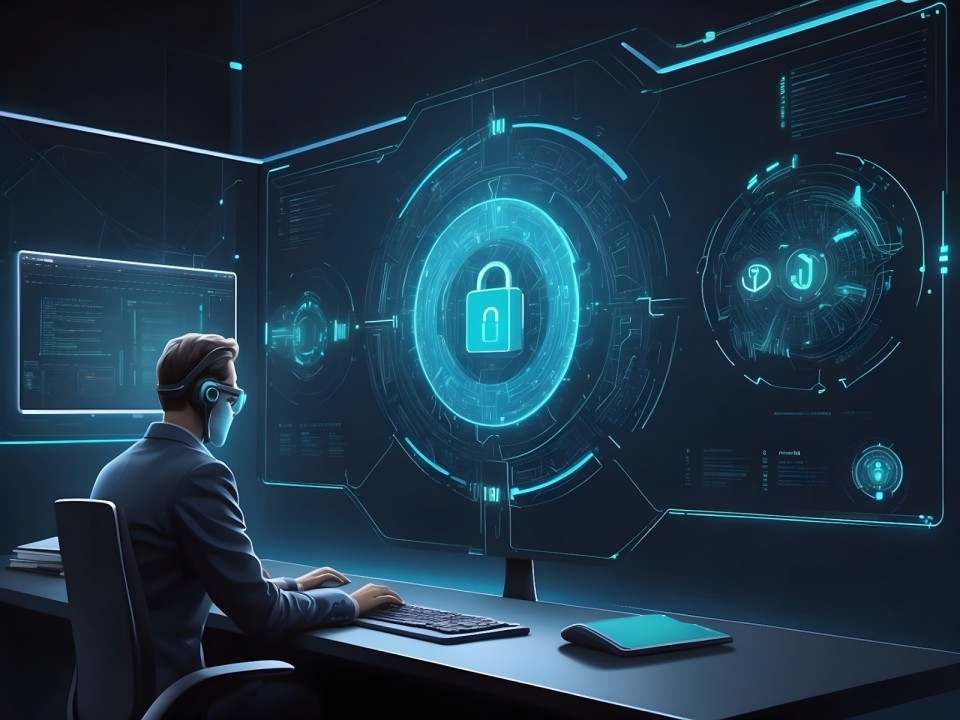
1. Data security: Entertainment firms collect massive amounts of user data, such as financial information and viewing habits. Robust cybersecurity protects this information from breaches and identity theft.
2. Maintains trust: Data leaks reduce customer trust. Strong cybersecurity shows a company's dedication to protecting customer privacy.
3. Ensure business continuity:
1. Protects infrastructure: Cyberattacks can impair a company's IT infrastructure, causing disruptions in operations and content delivery. Cybersecurity defends computers, networks, and databases from attacks.
2. Reduces downtime: By eliminating disruptions, cybersecurity enables seamless corporate operations and continuous content supply to viewers.
4. Mitigating legal risks:
1 Compliance with regulations: The entertainment sector is subject to data privacy laws. Cybersecurity enables businesses to comply with these requirements and avoid costly fines.
To summarize, cybersecurity is no longer an afterthought, but rather an essential function in the entertainment and media industries. It secures precious assets, preserves customers, and ensures that organizations run smoothly in today's ever-changing digital landscape.
1. Malicious attacks: Hackers may target media firms to steal intellectual property, disrupt operations with ransomware, or get access to customer data for financial gain.
2. Insider threats: Employees with authorized access can also pose a risk by unintentionally or purposefully disclosing critical information.
3. Social engineering: Hackers might use deceitful approaches to persuade employees into disclosing passwords or clicking on dangerous websites.
Security Measures:
1. Access controls: It is critical to limit sensitive data and system access depending on job needs.
2. Data encryption: Encrypting data at rest and in transit renders it unreadable even if intercepted by hackers.
3. Vulnerability management involves regularly patching software vulnerabilities and updating systems to reduce potential access points for attackers.
5. Employee Training:
Educating employees about cybersecurity recommended practices, such as password hygiene and phishing awareness, is vital.
Specific challenges:
1. Distance work: The entertainment sector frequently requires collaboration with freelancers and distant teams. Securing access for these individuals necessitates special precautions.
2. Third-party vendors: Media firms rely on a variety of vendors throughout the production and distribution stages. It is critical to ensure that these providers adhere to strong cybersecurity procedures.
3. Legacy systems: The industry may employ older systems that are more susceptible to attacks. Upgrades or extra security measures for these systems are required.
Staying ahead:
4. Cybersecurity assessments: Evaluating a company's security posture regularly allows for the identification and mitigation of vulnerabilities before they are exploited.
5. Threat intelligence: Knowing about the latest cyber dangers and attack methodologies enables businesses to build proper countermeasures.
6. Incident response strategy: Having a plan in place to deal with cyberattacks helps limit damage and speed up recovery.
However, understanding the growing threat landscape and implementing effective cybersecurity safeguards may help the entertainment and media sector preserve its valuable assets, and maintain audience confidence. so, starting a career in ethical hacking ensures long-term success in the digital age.
Top Companies Hiring Cybersecurity Professionals in India
If you want a career in cybersecurity, there are a few things you can do to boost your probability of getting hired. First, you should build a solid foundation in cybersecurity ideas. There are both online and offline tools available to assist you learn about cybersecurity. Second, you should think about getting certified in cybersecurity. There are numerous sorts of cybersecurity certifications available, and the appropriate certification for you will depend on your experience and professional goals.
Finally, you should begin networking with fellow cybersecurity specialists. This can be accomplished by attending industry events or joining online networks.
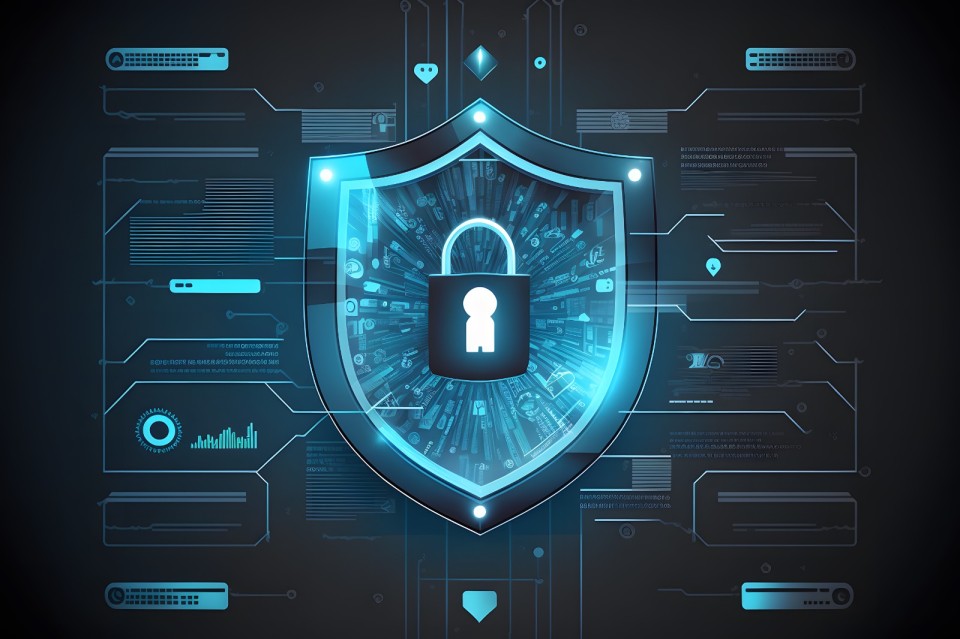
10 Best Cyber Security Certifications for 2024
The cybersecurity landscape is continually changing, as are the skills and credentials that businesses are searching for. Here are ten of the top cybersecurity credentials to obtain in 2024:
1. CompTIA Security+
- This vendor-neutral certification confirms a candidate's fundamental understanding of cybersecurity concepts and best practices. It's a good beginner's certification for anyone wishing to get into the cybersecurity field.
2. Certified Information Systems Security Professionals (CISSP)–
This highly recognized certification addresses a wide range of cybersecurity subjects, including security technology and architecture, communications and security for networks, identity, and access management (IAM), security evaluation and testing, security operations, and software development security.
3. Certified Ethical Hacker (CEH).
This certification is intended for IT professionals who wish to learn the skills needed to ethically hack computer systems and detect and exploit vulnerabilities. The CEH is an excellent choice for security experts who want to focus on testing for vulnerabilities and vulnerability assessment.
4. GIAC Security Essentials (GSEC):
This certification is vendor-neutral and covers the principles of information security. It's a good alternative for IT professionals who want to discover more about cybersecurity but lack prior experience.
5. (ISC)² Certified Authorization Professional (CAP):
This certification verifies a candidate's understanding and abilities in risk management, access control, and authorization. The CAP is an excellent choice for security professionals who want to specialize in identity and access management (IAM).
6. Certified Information Systems Auditors (CISA):
This certification is intended for IT audit professionals who wish to demonstrate their proficiency in assessing and auditing information security measures. The CISA is a solid choice for IT auditors looking to specialize in cybersecurity.
7. Certified Cloud Security Professional (CCSP):
This certification verifies a candidate's understanding and abilities in cloud security. The CCSP is a solid choice for security professionals looking to work in the cloud computing industry.
8. AWS Certified Security:
Specialty This certification verifies a candidate's knowledge and abilities in protecting Amazon Web Services (AWS) settings. AWS Certified Security - Specialty is an excellent choice for security professionals looking to work with AWS.
9. Google Cybersecurity Professional Certificate:
This is a free online certificate program from Google that teaches the foundations of cybersecurity. It's an excellent choice for anyone wanting to learn more about cybersecurity or seeking an entry-level cybersecurity position.
10. Offensive Security Certified Professional (OSCP):
This certification is intended for IT professionals who wish to learn how to ethically hack computer systems to detect and exploit flaws. The OSCP is a more advanced certification than the CEH, and candidates must complete a hands-on exam. The OSCP is an excellent choice for security professionals who want to focus on penetration testing and vulnerability assessment.
These are just a few of the various cybersecurity certifications available today. The right certification for you depends on your experience, career goals, and budget.
The rising possibility of cyberattacks has increased the demand for cybersecurity expertise in India. Here are some of the most sought-after cybersecurity positions:
1. Network Security Engineers plan, implement, and maintain the security of the computers on company networks. They also analyze network traffic for suspicious behaviour and devise security risk-mitigation measures.
2. Cybersecurity analysts:
Cybersecurity analysts evaluate security threats and vulnerabilities, monitor network traffic for odd activity, and deploy security solutions to safeguard an organization's data and systems.
3. Security Architects:
Security Architects design and supervise the implementation of an organization's comprehensive security posture. This involves developing security policies, procedures, and controls.
4. Cybersecurity Manager:
Directs and oversees an organization's cybersecurity staff. Cybersecurity analysts evaluate security threats and vulnerabilities, monitor network traffic for odd activity, and deploy security solutions to safeguard an organization's data and systems.
5. The CISO
is the organization's primary cybersecurity specialist. They are accountable for the complete safety of the organization's information assets.
6. Information Security Specialist:
Sets up and maintains security measures to secure an organization's data and systems. They may also be tasked with conducting security audits and assessments.
7. Cybersecurity engineers
plan, develop, and implement security solutions to protect an organization's data and systems. They may also be tasked with developing security codes and doing security tests.
8. Application Security Engineer:
Ensures the security of an organization's applications. They may be in charge of discovering and addressing security flaws in programs, as well as implementing secure coding methods.
9. Ethical Hacker (Penetration Tester):
Uses hacking skills to detect weaknesses in an organization's systems that malevolent hackers may exploit. They then collaborate with the organization to address these issues.
10. Incident Manager:
Manages the reaction to security incidents. They are in charge of containing the incident, determining the reason, and recovering from the harm.
11. Cyber Security Consultant:
Offers cybersecurity advice and services to enterprises. They may assist firms in developing security plans, conducting security assessments, or implementing security solutions.
12. Cloud Security Engineer:
Protects cloud-based settings. They may be responsible for discovering and managing security threats in the cloud deployments, as well as for developing secure cloud configurations.
Consequently, Cybersecurity experts ensure the security of IT infrastructure, data, edge devices, and networks. Many of them are programmers, system or network administrators, or have studied math and statistics. Such abilities are important for the work of an IT security expert, but so are critical thinking, curiosity, and a desire to learn and explore. Furthermore, hackers are naturally innovative, therefore cybersecurity professionals must be as well to outsmart them.
India's rising dependency on technology necessitates cyber security. Here's why:
1. Rising Threats:
1. Increased Internet Users: India's internet user population is huge and continuously growing, making it an ideal target for cybercriminals.
2. Digital Initiatives: Government programs such as "Digital India" and "Make in India" rely largely on safe digital infrastructure.
3. Financial Transactions: The proliferation of online banking and digital payments needs strong security measures to safeguard sensitive financial information.
2. Potential Effects:
1. Economic Damage: Cyber attacks can devastate enterprises, resulting in financial losses, adverse publicity, and the disruption of vital services.
2. National Security: Cyber threats can target essential infrastructure such as power grids and communication networks, endangering national security.
3. Individual harm: Data breaches can reveal personal information, resulting in identity theft, financial fraud, and even social harm.
3. Positive developments:
1. Government Focus: India's government is working to improve cyber security by establishing bodies like CERT-In and passing stronger data protection regulations.
2. Increased Awareness: Businesses and individuals are becoming more aware of cyber dangers, which is driving up demand for cybersecurity expertise and solutions.
3. Market Growth: The Indian cyber security market is flourishing, with increased investment in security technologies and services.
Overall, cyber security is no longer a luxury, but rather a requirement for India's sustained digital development and economic prosperity. Cyber Security in financial institutions contributes to the prevention of sensitive data and financial assets, which is cyber criminals' main aim. Prioritizing cyber defense allows India to safeguard its essential infrastructure, businesses, and residents from ever-changing digital threats.
Challenges:
1. Competent Workforce Gap: Despite the increased demand for cybersecurity specialists, there remains a shortage of competent personnel to fill these positions.
2. Legacy Infrastructure: Many businesses, particularly in the government sector, rely on antiquated infrastructure that is more vulnerable to assault.
3. Lack of Awareness: Despite increased awareness, a sizable segment of the public is still vulnerable to phishing schemes and social engineering approaches.
Initiatives and solutions:
1. To overcome the labor gap, both the government and corporate sectors are pushing cybersecurity education and training programs.
2. Promoting Innovation: There is a rising emphasis on building indigenous cybersecurity solutions that are suited to India's unique requirements.
3. Public-Private Partnerships: Collaboration between government agencies and private security firms is critical to a complete cyber protection plan.
Future Outlook:
1. Focus on Cloud Security: As India moves more data and apps to the cloud, strong cloud security solutions will be required.
2. Data Privacy rules: India's expanding data privacy rules, such as the Personal Data Protection Bill, will help define the cyber security landscape.
3. International Cooperation: Collaboration with other countries is crucial for combating cybercrime on a global scale.
By solving these difficulties and further developing its cyber security capabilities, India can become a more secure and resilient digital nation.
Few more observations
1. Impact on Social Concerns: Cybercrime can increase social concerns such as identity theft and online harassment, necessitating safeguards to protect vulnerable groups.
2. Cybersecurity and National Security: Cyber threats constitute a substantial national security danger, needing strong cyber defense capabilities.
3. Ethical hacking and bug bounty: Promoting ethical hacking and bug bounty programs encourages security researchers to find and report flaws.
The roles and responsibilities of cybersecurity professionals
Cybersecurity experts play a critical role in protecting organizations and individuals from cyberattacks. Their roles might be fairly diverse, but often fall under the following categories:
1. Protection and Prevention:
1. Network Security: These experts create, implement, and manage computer network security protocols. This comprises firewalls, intrusion detection systems, and security protocols.
2. Vulnerability management involves identifying and assessing vulnerabilities in systems and applications and then implementing patches or other security steps to mitigate risks.
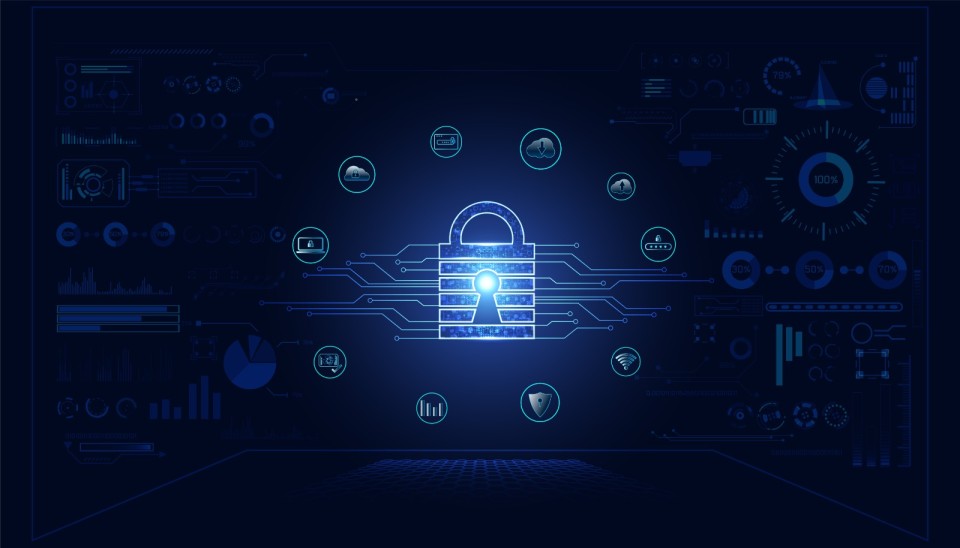
3. Security Awareness Training: They teach employees about cyber hazards and how to safeguard themselves and company data. This can involve phishing scams, social engineering techniques, and best password habits.
2. Detection and response:
1. Security Monitoring: They look for unusual network activity that could suggest a cyberattack.
2. Incident Response: When a security breach happens, they take the lead in containing the damage, determining the cause, and executing recovery measures.
3. Digital Forensics: They may be related to the field of technological forensics, which involves gathering and processing evidence from crime scenes.
3. Specialization and Advanced Roles:
1. Cyber Threat Intelligence: These experts collect and evaluate cyber threat information to assist firms in understanding attacker motivations, tactics, and methods (TTPs).
2. Security Automation and Orchestration (SOAR): They develop and manage systems that automate security processes, allowing teams to respond to attacks more effectively.
3. Cloud Security: As the use of cloud computing grows, so does the demand for specialists who understand cloud security dangers and best practices.
4. SCADA/ICS Security: Organizations that rely on Supervisory Control and Data Acquisition (SCADA) or Industrial Control Systems (ICS) require expert cybersecurity professionals to protect these crucial systems.
4. Beyond Technical Skills:
1. Communication and teamwork: Working in cybersecurity requires good communication and teamwork abilities.
2. Problem-Solving and Critical Thinking: Cybersecurity professionals must be able to think critically and solve complicated problems to detect and mitigate security risks.
3. Staying Mentally Strong: Dealing with cyberattacks can be stressful, so the ability to remain cool and focused under pressure is essential.
5. The Evolving Landscape
1. Artificial intelligence (AI) and machine learning (ML) are becoming increasingly significant in cybersecurity, with applications including threat detection, incident response, and vulnerability management.
2. Internet of Things (IoT) Security: The increasing number of connected devices creates new security concerns for cybersecurity specialists to overcome.
3. Social Engineering: Cybercriminals are continually creating new social engineering strategies, thus cybersecurity professionals must be aware of them and educate others on them.
6. Other responsibilities:
1. Security Policy Development: They may assist in the creation and implementation of security policies that specify authorized technological use and data security standards within a company.
2. Staying Current on Threats: Because the cyber threat landscape is continuously changing, cybersecurity professionals must stay current on the most recent threats and vulnerabilities.
3. Compliance: They may also be in charge of ensuring that an organization follows applicable data security regulations.
A cyber security professional's specific duties will vary depending on their job title, level of expertise, and the size and industry of the firm for which they work. However, they are all working toward the same goal: to defend our digital world.
The world is becoming more dependent on technology, resulting in a greater demand for cybersecurity professionals. Here are some convincing reasons to consider a career in this dynamic and ever-changing field:
1. High Demand and Job Security: The number of cyberattacks is steadily increasing, and there is a global scarcity of cybersecurity personnel to tackle these threats. This translates into high demand for qualified workers and good job security.
2. Cybersecurity specialists often earn competitive pay and compensation packages, reflecting the importance of their work.
3. Intellectual Challenge: Cybersecurity is a rapidly changing field that necessitates critical thinking, problem-solving abilities, and the capacity to remain ahead of hackers. This is a field that will never tire you!
4. Making a Difference: By securing our digital infrastructure, you'll help protect businesses, governments, and individuals from cyberattacks. Your efforts can have a tangible and good impact on the world.
5. Job Paths: The field of cybersecurity provides a diverse range of job opportunities, from technical professions such as security analysts or penetration testers to non-technical roles such as security awareness teachers or cybersecurity lawyers. There is a great spike in Cybersecurity jobs that offers something for everyone!
6. Continuous Learning: The cybersecurity world is always changing, so there will always be opportunities to master new skills and technology. This subject is ideal for people who appreciate remaining current and extending their knowledge base.
7. Remote Work Opportunities: Many cybersecurity positions include remote work options, allowing for better flexibility and work-life balance.
8. Continuous Innovation: Cybersecurity isn't static. It is a field at the cutting edge of technological innovation. You will be introduced to cutting-edge technologies, techniques, and ideas, keeping your workplace relevant and fascinating.
9. Sense of Community: The cybersecurity industry encourages a strong sense of community. There are several online discussions, conferences, and communities where professionals may network, share knowledge, and learn from one another.
10. Worldwide Impact: Cybersecurity risks have a worldwide reach. Your efforts can have a positive influence on people all across the world by securing essential infrastructure and sensitive information.
11. Personal Development: The ever-changing nature of cybersecurity necessitates ongoing learning. This translates into ongoing personal and professional development as you gain new skills and information throughout your career.
12. Career Flexibility: Cybersecurity skills are beneficial in a variety of businesses. Your talents can lead to a variety of employment opportunities in cybersecurity, including banking, healthcare, government, and technology.
13. Entrepreneurial Opportunities: The cybersecurity landscape provides fertile ground for new ventures. If you have an aptitude for discovering security flaws and generating solutions, you could consider starting your own cybersecurity firm.
14. Contribute to open-source projects. The cybersecurity business relies heavily on open-source security products and frameworks. You can offer your skills and knowledge to these initiatives, benefiting the community and shaping the future of security.
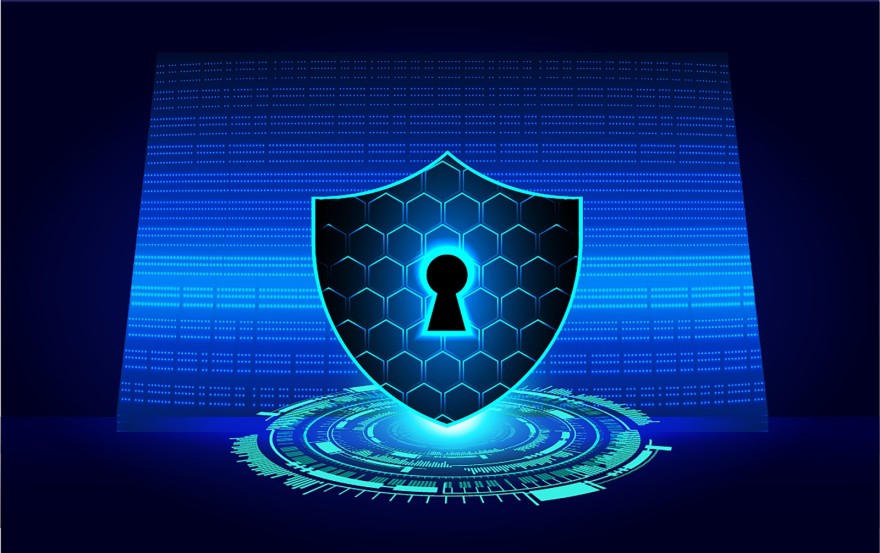
Here are some other aspects to consider:
1. Do you appreciate puzzles and problem-solving?
Cybersecurity is about discovering and resolving security issues.
2. Do you have a passion for technology?
A thorough understanding of technology and how it operates is advantageous in this sector.
3. Do you want to have a positive impact?
Cybersecurity specialists play an important role in safeguarding our digital environment.
If you answered yes to these questions, a career in cybersecurity could be a great fit for you! It's a hard yet rewarding industry with several prospects for advancement and impact.
Cybersecurity is crucial in the modern digital age, and India has enacted legislation and ethical guidelines to address it.
Here's the breakdown:
1. Legal aspects of Cyber Security in India
1. The Information Technology Act of 2000: This is the primary law that governs cybersecurity and cybercrime in India. It defines different cybercrimes, including hacking, data breaches, and cyber fraud. It also sets up legal procedures for electronic transactions and digital signatures.
2. The Indian Penal Code (IPC) Traditional crimes such as theft, fraud, and forgery can be applied to cybercrimes performed electronically using computers.
3. Other Relevant Laws: Certain businesses, such as finance, may have sector-specific legislation in place to bolster cybersecurity safeguards.
2. Ethical Perspectives of Cyber Security in India
1. Confidentiality: Protecting user data and ensuring its privacy is a fundamental ethical principle of cyber experts in India.
2. Integrity: Data correctness and completeness are crucial, particularly when managing sensitive material.
3. Availability: Authorized users should have access to systems and data when they need it.
4. Accountability: Organizations and individuals must accept responsibility for their behavior in the digital environment.
3. Importance of Both
1. A solid legal framework deters cybercrime while also providing victims with remedies.
2. Ethical practices go beyond legal standards to promote trust and responsible behavior in cyberspace.
4. Additional considerations
1. Data Protection: The Personal Data Protection Bill (PDP Bill) is now being considered, to regulate data privacy and strengthen user rights.
2. The National Cybersecurity Policy (NCSP) 2013: This strategy establishes a strategic approach to securing India's cyberspace.
3. Indian Computer Emergency Response Team (CERT-in): This government agency is in charge of responding to and coordinating cybersecurity incidents.
Individuals and businesses that grasp both the legal and ethical sides of cybersecurity can operate more securely and ethically in India's digital ecosystem.
Here's a more detailed look at the legal and ethical implications of cybersecurity in India, building on the preceding explanation:
1. Legal Aspects: Nuances and Challenges
2. Evolving Landscape: Cybercrime methods and technologies are always evolving. Keeping rules and regulations strictly up to date can be tough.
3. Data Localization: There are debates around data storage and processing within India's boundaries. The PDP Bill may provide additional clarity on this.
4. Attribution and Jurisdiction: Cyberattacks frequently originate outside India, making it difficult to identify and prosecute perpetrators. International cooperation is vital.
2. Ethical Aspects: Considerations and Best Practices
1. Privacy vs. Security: There is constant debate over how to balance the requirement for security with individual privacy rights. Transparency in data gathering and use is vital.
2. Ethical Hacking: Penetration testing, in which ethical hackers uncover weaknesses in systems, can be a useful technique, but it requires explicit protocols and control.
3. Cybersecurity Awareness: Educating people on cyber hazards and recommended practices is critical to developing a strong cybersecurity culture.
Emerging Issues
1. Artificial Intelligence (AI) Security: As AI becomes more widely used, it is critical to ensure its security and mitigate any threats.
2. Internet of Things (IoT) Security: Protecting the huge number of networked devices in the IoT ecosystem is a significant concern.
3. Misinformation and disinformation: Spreading incorrect information online can have major repercussions. Addressing this issue demands a multifaceted strategy.
India's legal and ethical frameworks for cybersecurity lay a solid basis, but ongoing adaptation and coordination are required to keep ahead of cyber threats. India can ensure its digital future by tackling growing issues and cultivating a cybersecurity culture.
It's a fast-expanding sector with tremendous chances to make a significant impact in the digital world. Here's a roadmap to help you navigate your cybersecurity journey after 12th grade:
1. Establishing a Strong Foundation:
Solidify Your Tech Skills: Review your computer science foundations, including programming languages, operating systems, and networking principles. Online classes, coding boot camps, and certifications such as the CompTIA ITF+ can be useful beginning points.
2. Explore Educational Paths:
1. Consider earning a bachelor's degree in cybersecurity, computer science, or information technology. These seminars provide a thorough overview of cybersecurity principles, ethical hacking, secure coding methods, and applicable technology.
2. Diploma Courses: Diploma courses in cybersecurity are shorter, career-oriented programs that give you practical skills for entry-level cybersecurity jobs. These can be a good option if you want to enter the workforce faster.
3. Deepen Your Knowledge:
1. Certifications: Completing industry-recognized certifications such as CompTIA Security+, Certified Ethical Hacker (CEH), or Certified Information Systems Security Professional (CISSP) will demonstrate your knowledge and improve your career prospects. Begin with basic credentials and proceed to more advanced ones as you gain expertise.
4. Gain practical experience:
1. Internships: Look for internships with cybersecurity firms or IT departments. This provides valuable hands-on experience and helps you understand how your information may be applied practically.
2. Personal Projects: Create personal cybersecurity projects to demonstrate your abilities and interests. Create a safe website, join bug bounty programs, or contribute to open-source security initiatives.
5. Stay updated:
1. Cybersecurity News: Keep up with the newest cyber threats, vulnerabilities, and security best practices. To stay current, read cybersecurity blogs, attend conferences, and participate in online networks.
6: Additional resources
1. Books and Articles: To learn more about cybersecurity, read books and articles produced by specialists.
2. Mentorship: Seek advice from the cybersecurity pros in your network. They can offer helpful counsel and career guidance.
cybersecurity is a dynamic field. Learning and a passion for staying ahead of the curve will fuel your success in this exciting career path.
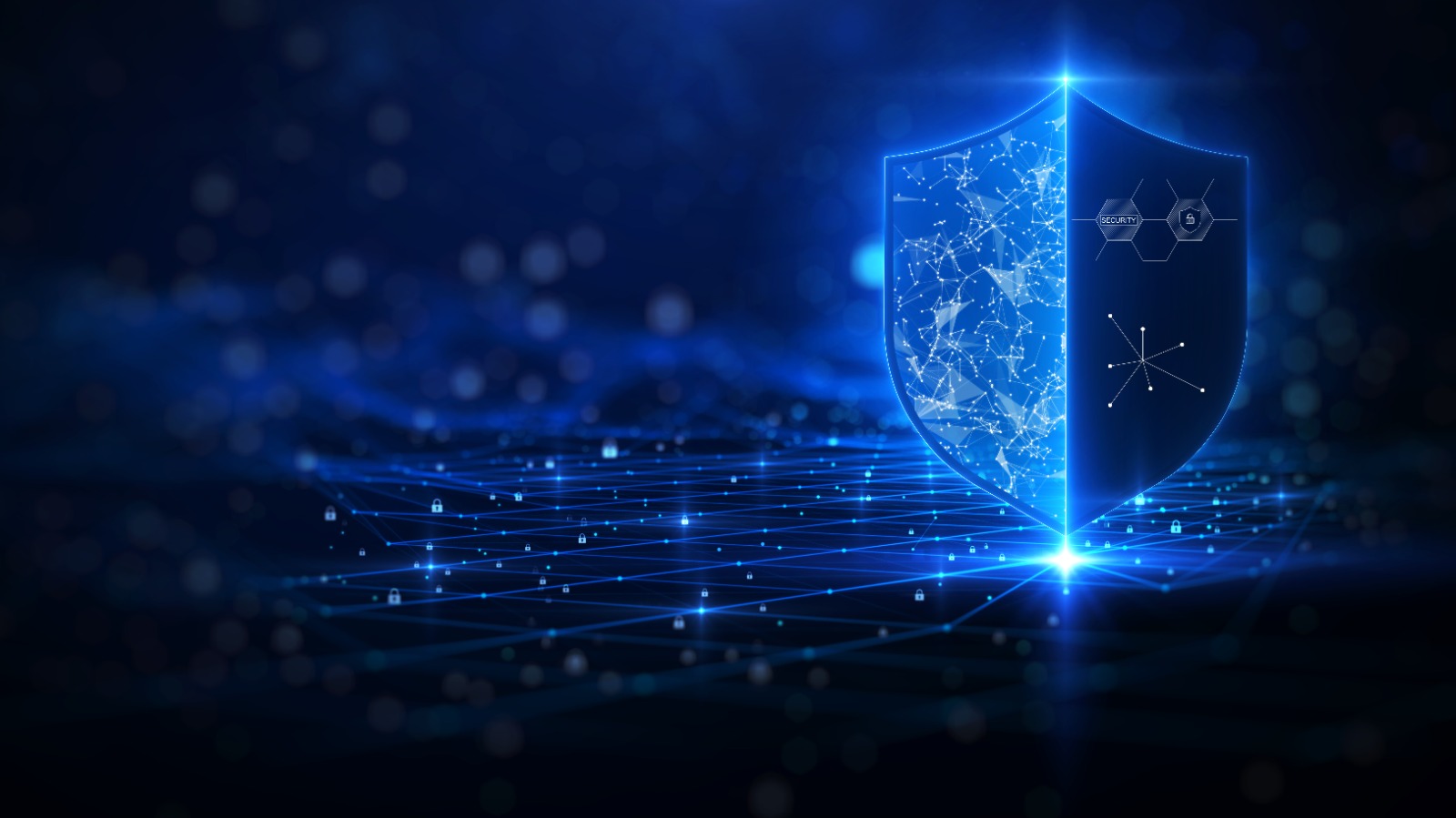
Cloud computing provides numerous benefits to enterprises; nevertheless, with immense power comes great responsibility, particularly in terms of security. This is where cybersecurity comes in to play a critical part in the cloud computing sector.
Essentially, cybersecurity protects sensitive data and ensures that cloud-based services run smoothly. Here's a rundown of its main duties:
1. Data Security:
Cybersecurity protects sensitive data stored in the cloud from unwanted access, breaches, and theft. This includes encryption and access restrictions to ensure data security at rest and in transit.
2. Maintaining Trust and Compliance:
Strong cybersecurity builds trust with clients by demonstrating a commitment to data security. It also helps firms comply with industry laws.
3. Business continuity:
Cybersecurity protects against cyberattacks that may impair cloud services. Businesses that deploy adequate security measures can recover from assaults more quickly and preserve operational resilience.
The cloud and cybersecurity work hand in hand. Cloud providers provide security features such as centralized administration consoles that make it easier to enforce security policies. In turn, cybersecurity professionals use these capabilities to build a more secure cloud environment.
- Cloud Provider Security:
Cloud providers are in charge of protecting the underlying infrastructure, which includes physical data centers, network security, and virtualization technologies. They invest substantially in security and provide features like encryption, firewalls, and intrusion detection systems.
- Customer Security:
While the cloud provider secures the infrastructure, enterprises must secure the data and applications housed in the cloud. This involves putting in place access controls, using multi-factor authentication, and appropriately establishing cloud security settings.
1. Misconfiguration:
Cloud environments provide a wide range of options and customizations. Inadvertently misconfiguration security settings might lead to vulnerabilities that hackers can exploit.
2. Insider Threats:
Despite robust perimeter protection, malevolent insiders can constitute a substantial threat. Data breaches might occur as a result of employee negligence or credentials being stolen.
3. Evolving Threats:
The cyber threat landscape is always changing. To keep up with hackers, cloud infrastructures must be adaptive and include the most recent security fixes and updates.
1.
Recognize the shared responsibility
model and understand which security issues are handled by the cloud provider and which require your organization's involvement.
2.
Data Encryption:
Encrypt data at rest and in transit to maintain confidentiality even when intercepted.
3.
Implement strong identity and access management (IAM) rules
with granular access restrictions to ensure that only authorized users have access to data and apps.
4.
Conduct regular penetration testing and vulnerability
assessments to uncover and repair security flaws before attackers exploit them.
5. Educate Users:
Train staff on cloud security best practices, such as password hygiene and being wary of phishing efforts.
Organizations can protect and gain the benefits of the cloud by understanding the role of cybersecurity, and the shared responsibility model, and applying best practices.
Overall, cybersecurity is critical in the cloud computing sector. It enables enterprises to maximize the cloud's promise while limiting the dangers associated with ever-changing cyber threats.
Positive impacts:
1. Boosts Digital Adoption: Strong cybersecurity increases trust in online services, encouraging individuals and organizations to adopt digital technology. This promotes the development of the emerging economy, involving online shopping, banking, and e-government services.
Cybersecurity defends essential infrastructure such as power lines, transportation systems, and networks of communication against cyberattacks. This helps to avoid disruptions that might disrupt essential services and jeopardize public safety.
2. Empowers Financial Security: Strong cybersecurity measures in the financial industry secure online transactions and sensitive financial data. This reduces the danger of fraud and identity theft while promoting a healthy financial ecosystem.
3. Improves National Security: Cybersecurity is crucial for defending sensitive government data and critical national infrastructure against cyber espionage. This strengthens national security and protects India's strategic interests.
Challenges and concerns:
While cybersecurity encourages digital adoption, a sizable segment of the Indian population continues to lack access to technology and the skills required to traverse the digital world safely. This can worsen the digital divide and expose certain people to cybercrime.
1. Privacy concerns: The requirement for strong cybersecurity measures might occasionally generate worries about government surveillance and data privacy. Achieving an equilibrium between privacy and safety is critical.
2. Cybercrime Impact: Despite cybersecurity efforts, India continues to receive a significant frequency of cyber attacks. Such incidents can have major effects on individuals, businesses, and the global economy, including financial losses and negative media attention.
Looking ahead:
1. Developing a Cyber-Skilled Workforce: To combat increasingly sophisticated cyber-attacks, India must invest in the training of its cybersecurity workforce.
2. Public Understanding Campaigns: Increasing public understanding of cyber hygiene and online safety practices is critical to establishing a more secure digital world.
3. Collaboration and Regulation: Effective collaboration among government agencies, corporations, and citizens is required to combat cybercrime. Additionally, strong legislative frameworks are required to deter cyberattacks and protect data privacy.
In a nutshell, cybersecurity in India is a two-edged sword. While it unleashes the power of the digital revolution, it also requires ongoing vigilance against cyber dangers. Addressing the difficulties and cultivating a culture of cybersecurity awareness will be critical to creating a secure and flourishing digital India.
Impact on Business
Cybersecurity has a significant influence on businesses of all sizes and in all industries. Here is a summary of the main areas it influences:
1. Financial Impact:
1. Data Breach Costs: Cyberattacks can be financially catastrophic. Businesses face costs connected with data recovery, forensic investigations, legal fees, and potential fines for failing to comply with data protection requirements.
2. Business Disruption: Cyberattacks can interrupt operations, resulting in decreased productivity, downtime, and income. Critical systems may be unavailable, impeding core corporate operations.
3. Data breaches and cyberattacks can significantly harm a company's brand. Loss of customer trust can result in lower sales and trouble obtaining new clients.
2. Positive impacts:
1. Protects Intellectual Property: Cybersecurity keeps critical corporate information, trade secrets, and intellectual data protected from theft or illegal access.
2. Maintains Competitive Advantage: A robust cybersecurity posture can be a competitive differentiator, ensuring client data security and instilling trust in your brand.
3. Ensures Business Continuity: Effective cybersecurity measures allow firms to recover faster from security incidents and reduce downtime. This keeps operations running smoothly and mitigates potential disruptions.
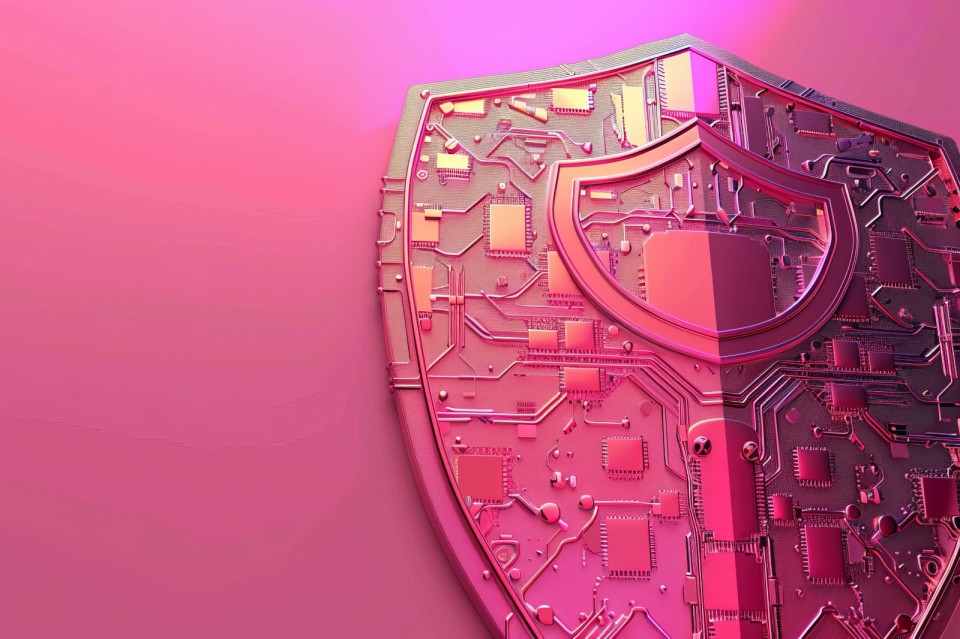
Additional considerations:
1. Compliance: Data protection standards require businesses in several industries to follow specified cybersecurity policies. Implementing strong security measures assures compliance while avoiding costly fines.
2. Third-Party Risk: Businesses rely on numerous vendors and partners. Cybersecurity safeguards must extend beyond your network to address the threats provided by third-party system vulnerabilities.
3. Evolving Threats: The cyber threat landscape is always changing. Businesses must be proactive in implementing the most recent security solutions and maintaining current on emerging risks.
Overall, cyber security is more than an IT worry; it is a significant business issue. Businesses that invest in an effective cybersecurity plan can safeguard their financial assets, maintain an edge over the competition, and earn the belief of consumers and partners.
Here's why working in cybersecurity is appealing in India:
1. High Demand and Growing Market:
As India's digital ecosystem expands, businesses and individuals become great targets for cyberattacks. This growth in attacks creates a significant need for cybersecurity expertise to protect sensitive data and systems. Cybersecurity in India is expected to experience tremendous expansion, offering several career possibilities.
2. Lucrative Salaries and Career Stability:
Compared to other tech fields, cybersecurity pays well. With experience, these earnings can increase significantly. The field itself is expected to remain steady, with a consistent demand for skilled cybersecurity specialists.
3. Dynamic and intellectually stimulating:
The world of cybersecurity is continuously changing, forcing practitioners to keep ahead of hackers. This fast-paced environment provides intellectual challenges, and the opportunity to continuously learn and adapt.
4. Making a Difference:
Cybersecurity specialists play an important role in safeguarding critical infrastructure and information. Their work protects individuals, businesses, and the nation from cyber dangers, making major contributions to a secure digital environment.
5.. Diverse Career Paths:
Cybersecurity is not an all-inclusive profession. There are various specializations, including ethical hacking, testing for penetration, security analysis, and more. This variety helps you to discover a specialty that matches your interests and skill set.
6. Educational qualifications:
- A bachelor's degree in computer science, information technology, or a similar discipline provides an excellent foundation.
- Master's degrees in cybersecurity or information security might offer more expertise and specialization.
- CompTIA Security+, Certified Ethical Hacker (CEH), and CISSP (Certified Information Systems Security Professional) certifications will help you improve your resume and demonstrate your competence to companies.
7. Roadmap to Success:
- Start with the essentials:
Understand fundamental cybersecurity principles such as network security, cryptography, and system management. Online classes, tutorials, and books are all valuable tools.
- Develop technical skills:
Learn programming languages that are often used in cybersecurity, such as Python and Java. Understanding computer operating systems like Linux and Windows is also required.
- Obtain practical experience:
Looking for internships or entry-level work in cybersecurity to apply your theoretical knowledge in a real-world scenario.
- Hackathons and capture-the-flag (CTF)
events can help you test your talents and get useful experience.
- Stay updated:
The cybersecurity world is always shifting. Regularly attend workshops, conferences, and online training to stay up to date on the latest dangers and protective techniques.
Remember that passion and a continuous learning mentality are essential for success in cybersecurity. The field requires dedication, but the benefits in terms of job satisfaction, advancement opportunities, and making a positive difference are substantial.
With India's growing digital ecosystem, smartphone security is a critical responsibility. Here's a quick overview of the main risks and how to keep safe:
1. Phishing and SMiShing: Beware of emails (phishing) or texts (SMiShing) that try to fool you into clicking hazardous links or downloading malware. Avoid clicking on dodgy links and double-check senders before responding.
2. Unsecured Public Wi-Fi: Using public Wi-Fi can cause cyber-attacks. Therefore, important functions like online banking should not be done with public Wi-Fi. If you need a guard for it, switch to a Virtual Private Network (VPN). VPN connections for the industry offer enhanced security protocols, encrypting data transmissions and shielding sensitive information from potential threats lurking on public networks. By employing VPNs, industries can ensure secure remote access to their networks, safeguarding critical assets and maintaining confidentiality in their operations.
3. Insecure App Downloads: Only download apps from reliable sources, such as official app shops. Be wary of third-party app stores, which may include viruses.
4. Outdated Software: Update your phone's operating system and apps with the most recent security updates. Outdated software contains flaws that hackers can exploit.
5. Weak Passwords: Create strong, unique passwords for all of your accounts and activate two-factor authentication for added security.
6. Physical Theft: Losing your phone might be disastrous. Enable options such as "Find My Device" and keep your phone's PIN or fingerprint lock on.
1. Installing a mobile security application can secure the smartphone against malware, viruses, and other attacks.
2. Be Wary of Free Wi-Fi: As previously said, avoid public Wi-Fi for sensitive activities. If you must use it, try using a VPN.
3. Use Caution with Links: Do not click on links in strange emails or text messages. Verify senders before opening anything.
4. Strong passwords and multi-factor authentication: This applies to all of your mobile accounts, not just banking.
5. Backup your data: Make regular backups of the information on your device to avoid loss in the case of theft or damage.
Following these guidelines will dramatically improve your mobile security posture and prevent you from cyber dangers in India's digital environment.
1. Pre-installed Malware: Some low-cost cellphones in India may come pre-loaded with undesirable software (bloatware), which might pose security hazards. Before purchasing a phone, do your research and consider deleting any unwanted apps.
2. Unregulated Third-Party App Stores: While the Google Play Store reigns supreme, third-party app stores can be sources of malware. Download apps from official sources only.
3. SMS-based banking fraud is a widespread occurrence in India. Be wary of SIM-swap schemes, in which attackers get control of your phone number for harmful intentions.
1. Government Data Collection: India has data privacy legislation, such as the Information Technology Act of 2000 and the impending Personal Data Protection Bill. However, there are worries about the government's data collection techniques.
2. Data Leaks: Data breaches that expose the personal information of Indian citizens have occurred. Be aware of the information you share online.
Indian Resources:
1. Indian Computer Emergency Response Team (CERT-In): This government organization offers cybersecurity advice and services. Follow them on social media for the most recent threats.
2. Cyber Dost: This government project seeks to educate citizens about cyber safety. They have a website with tools and a hotline.
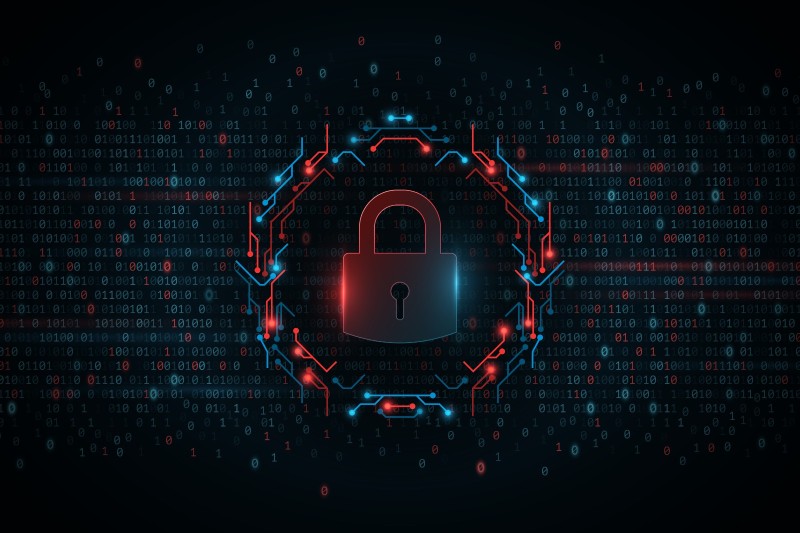
Maintaining safety in today's digital world necessitates ongoing awareness. Following these mobile security best practices and remaining educated about cybersecurity in India and the changing threat landscape can dramatically lower your chance of falling victim to cyberattacks in India. Remember that a few wise behaviors can go a long way toward preserving your information and privacy. Additionally, staying updated with the top cyber security certifications in India can further enhance your expertise and preparedness against evolving threats.
India's digital landscape is rising, but with it comes an ever-changing cyber threat landscape. Here is a breakdown of some major trends and challenges:
Rising Threats:
1. Ransomware: Ransomware assaults are still a serious problem in India. These assaults encrypt a victim's data and then demand a ransom for decryption. Targets include corporations, government entities, and even crucial infrastructure.
2. Social engineering: Phishing and smishing scams are common, luring users into opening harmful links or installing software. These frauds frequently target financial or personal data.
3. Supply Chain Attacks: By targeting weaknesses in software or service providers, attackers can gain access to a broader range of victims.
4. Mobile Malware: India's massive mobile user base makes it a good target for mobile malware that can steal data, track user activity, or display intrusive ads.
5. Data Breaches: With an increasing amount of data collected online, data breaches are a constant threat. Exposed personal information may be used for identity theft or sold on the dark web.
Challenges For Indian Organizations:
1. Lack of awareness: Many firms and individuals are unaware of cybersecurity concerns and effective practices. This increases their vulnerability to attack.
2. Skilled Professional scarcity: India has a serious scarcity of cybersecurity professionals, making it challenging for businesses to adequately staff their security teams.
3. Outdated Infrastructure: Legacy systems and outdated software are frequently vulnerable to known attacks. Upgrading infrastructure is critical for ensuring security.
4. Regulation and Compliance: India's cybersecurity regulations are constantly evolving. To avoid penalties, organizations must keep up with compliance obligations.
Emerging trends:
1. AI-powered Threats and Defense: Cybercriminals are increasingly leveraging AI to automate and customize attacks. AI can also help to improve cybersecurity by detecting anomalies and forecasting threats.
2. Cloud Security Concerns: As more businesses migrate to the cloud, safeguarding cloud environments becomes more important. Organizations must grasp cloud security best practices and choose reputable cloud providers.
3. Focus on Zero-Trust Security: This approach believes that no user or gadget is intrinsically trustworthy, necessitating ongoing verification. It is becoming more popular to have strong security measures.
4. IoT Security: Securing the enormous network of linked devices in the IoT ecosystem presents a significant problem.
1. Promoting understanding and Education: Increasing public understanding of cybersecurity threats and effective practices is critical for both individuals and enterprises.
2. Investing in Cybersecurity Workforce Development: Building a professional cybersecurity workforce is critical for closing the skills gap and strengthening India's cyber defenses.
3. Strengthening Regulations and Enforcement: Clear and comprehensive cybersecurity legislation, together with efficient enforcement mechanisms, can inhibit cybercrime while improving overall security posture.
4. Collaboration and Information Sharing: Working together with government agencies, organizations, and individuals is critical for staying up to date on the latest threats and developing effective countermeasures.
5. Understanding the dynamic threat landscape, implementing preventive measures, and building a cybersecurity awareness culture will help India construct a more robust digital infrastructure and safeguard its population and businesses from cyberattacks.
Examples of attacks:
1. Recent Attacks: Highlighting recent high-profile attacks in India on essential infrastructure, government organizations, or significant enterprises will help raise awareness of the gravity of the situation.
2. Targeted Attacks: Understanding how attackers target specific sectors in India, such as banking, healthcare, and e-commerce, might help these industries prioritize cybersecurity solutions. For instance, in the case of e-commerce, incorporating robust security measures is paramount, especially in web designing for e-commerce platforms. Implementing secure coding practices, encryption techniques, and regular vulnerability assessments can fortify these platforms against potential cyber threats.
The Impact of Mobile Usage:
1. Cashless Transactions: With India's increasing use of mobile wallets and UPI for cashless transactions, strong mobile security measures are required to avoid financial fraud.
2. Social Media Scams: Explain how social media scams target Indian users, such as creating fake profiles or impersonating celebrities or government officials to ensnare victims.
Government initiatives:
3. Discuss how the government's "Digital India" plan, which seeks to turn India into a digitally empowered nation, demands strong cybersecurity measures.
4. Cybersecurity agencies: Mention the role of government entities such as the Indian Computer Emergency Response Team (CERT-In) in issuing alerts, responding to incidents, and strengthening national cybersecurity.
Future of cybersecurity in India:
1. Automation and artificial intelligence (AI) are becoming increasingly important in cybersecurity for threat detection, incident response, and vulnerability management.
2. Public–Private Partnerships: Discuss the need for public-private collaboration in sharing information, developing cooperative cyber defense plans, and building a more secure digital environment in India.
Including these facts allows you to construct a more thorough picture of the cybersecurity situation in India, including specific threats, their impact, and potential solutions. Remember to cite credible sources for any data or statistics you use.